- RYA/MCA Yachtmaster Offshore Preparation & Exam
National Yachting School » RYA Sail Crusing Courses » RYA/MCA Yachtmaster Offshore Preparation & Exam

Yachtmaster Offshore is competent to skipper a cruising yacht on any passage during where astronavigation is not necessary.
An RYA/MCA Yachtmaster Offshore Certificate of Competence is often the ultimate aim of aspiring skippers. It is a well known, highly respected qualification worldwide, proving your experience and competence as a skipper.
To attain the RYA/MCA Yachtmaster Offshore candidates must pass a practical examination of their skippering ability. A Yachtmaster Offshore is capable of skippering the yacht on extended offshore passages by day or night. He or she will essentially be a much more experienced Yachtmaster Coastal and can do the same things more smoothly, for longer periods and in more arduous conditions. The theory knowledge required for the RYA/MCA Yachtmaster Offshore Certificate of Competence is the same as that for Yachtmaster Coastal, but considerably more practical experience and skill is required.
The 4 days prior to the exam is run along the same lines as the Yachtmaster Coastal preparation. Your instructor will asses your skills and address any areas over weakness. A high level of boat handling under various conditions of wind and tide is required. Navigation skills should be at the level of Yachtmaster/Coastal Skipper theory and a thorough knowledge of collision regulations is expected. Your instructor will tailor the course to suit your individual needs in order to prepare you for when the examiner steps on board.
After 4 days your instructor will give you a thorough debrief and you should feel confident in your ability to take the exam should you feel ready to do so.
During the exam, your RYA examiner will meet you onboard and talk you through the plan for the day. They understand that you could be nervous and will do their best to allay your fears and make sure you are clear about what they want you to do. They are there to find out what you can do, rather than pick holes. You will be asked to undertake a short passage, but you may have to plan a longer one. In general, you should skipper the yacht in your normal style. If this means putting the kettle on every half hour, then do it!
Your examiner isn’t looking for first-time-every-time success, but you will need to demonstrate competence and a good understanding of how the boat reacts at various situations. Don’t hesitate to change sails or reef, if you think it is necessary for the task.
Whether you are fully in command of the yacht is the most important assessment that your examiner will make. Especially with Yachtmaster Offshore the examiner will be looking for high level of proficiency based on broad experience.
Course Duration: 4 days for the course and 2 days for the exam. Most courses start on Saturday evening and finish on Wednesday afternoon, the exam starts the same evening or the next morning after the end of the course.
Previous Experience Required: 50 days aboard, 5 days as skipper, 2500 miles logged (min. half of it MUST be in tidal waters!), 5 passages of over 60 miles including 2 overnight and 2 as skipper. VHF radio operators certificate (SRC or higher) and a valid First Aid Certificate recognised by the RYA. click here for the list of acceptable first aid certificates
Course Overview: Preparation and brush up for the RYA/MCA Yachtmaster Offshore Certificate of Competence. Revision of advanced skippering techniques, close quarters handling under power and sail, navigation and pilotage by day and night, man overboard recovery and overall yacht management skills.
Minimum age: 18
Course price DOES NOT INCLUDE:
- exam fee paid directly to the RYA (205 GBP for YM Offshore, 177 GBP for YM Coastal)
- examiner's travel expenses from/to th UK (estimated approx. 300 Euro, shared between exam participants)
- food, harbour fees and diesel used for the boat
RYA Yachtmaster
| Date from | Date to | Place | Price | Status | |
|---|---|---|---|---|---|
| 02. 11. 2024 | 09. 11. 2024 | Kaštela (Croatia | 1190 € | open |
Due to the coronavirus crisis, we are canceling all practical courses in Croatia until further notice. For new course dates, please keep an eye on our website.
Winter courses on Canaries
In NYS we believe that there’s no such a thing as winter in sailing and you can always find a good place to enjoy your hobby any time throught the year. So we offer popular winter courses again, this time on Canary Islands, starting from Tenerife because of the best flight connections.
RYA Sailing Accreditation Rated as the World’s Best
The Royal Yachting Association (RYA) sailing qualifications have been voted the premiere sailing accreditation for excellence and global reputation following a recent survey targeting 200 professional yacht and motorboat charter companies. The professional charter companies that were surveyed own and manage in excess of 6,000 charter boats across the Mediterranean, Caribbean and Asia.
- Sail Cruising courses
- Commercial Endorsment
- Rent a boat
- Sailing equipment
- Yachting publications

National Yachting School Skola jachtingu s.r.o. Makovskeho namesti 3147/2, Brno, Czech Republic
Phone: +420 731 745 273 Phone: +421 902 896 099
Web: www.skolajachtingu.cz E-mail: [email protected]
(c) 2011-2024 National Yachting School - Sailing Courses, Skipper Licences
Links exchange | Site map | Top designed by čekit.cz
Online Courses
- What is RYA?
- NYS Instructors
- RYA Training Centre
- Terms and Conditions
- RYA Sail Training Ladder
- RYA Competent Crew
- RYA Day Skipper
- RYA Coastal Skipper
- RYA/MCA Yachtmaster Coastal Preparation & Exam
- Shorebased Theory Courses
- RYA Basic Sea Survival / World Sailing Personal Offshore Survival course
- Short Range Certificate


RYA Yachtmaster Offshore / Yachtmaster Coastal / Master of Yachts 200 Course 300
MPT is the most complete full service private maritime school in the country and has been training mariners since 1983. Our Fort Lauderdale based campuses host over 45,000 square feet of classrooms, deck and engineering training labs, the Ship's Store, and student service facilities.
Preparing for RYA Yachtmaster Offshore / Yachtmaster Coastal / Master...
Course description.
Yachtmaster Certificate of Competency
The Yachtmaster Qualification is the pinnacle of the RYA (Royal Yachting Association) Training and Certification System. It is widely recognized throughout the world as a prestigious accomplishment.
Holding this credential can:
- Improve your resume for any deck department position on yachts - Serve as prerequisite training for an MCA OOW 3000 GT CoC - Professional Development in your yachting career - Serve as your Certificate of Competence (CoC) for operators of yachts up to 200 tons
The Yachtmaster Course should be undertaken by crew aspiring to advance to the MCA OOW level up to 3000 tons and by those who are advancing to the command level for Master of Yachts up to 200 tons.
2 Routes Available – Same Course:
Yachtmaster Coastal Yachtmaster Offshore
Yachting professional candidates are encouraged to start their training and professional development as early in their career as possible. Many will take their STCW Basic Safety Training Program (#140) and then when they qualify, it is recommended to obtain the Yachtmaster Coastal CoC. Candidates wishing to upgrade to the offshore route later can simply examine, without additional required training.
Whether you qualify for the Yachtmaster Coastal or Offshore, the training is the same. The only difference is your experience and practical skill level. You will be examined towards whichever level you qualify for.
The MPT Yachtmaster Coastal and Offshore Course (#300) is taught on a Motor Yacht and the practical training and examination are towards a Motor Certificate of Competence. (If you are applying for a Sail Endorsement, this course will not satisfy your practical training and exam requirements). All sea time must be on a power boat and not on a sail boat under power. The Theory, SRC, PPR, and Basic Training courses are the same for both schemes.
The MPT Yachtmaster advanced level certification is available in a 2 week + exam program combining shore-based theory and practical hands-on techniques for a Motor Vessel and the RYA Practical Examination. The first week of class is in the classroom (theory) and the second week is Practical, out on the boat. In addition, there will be class on Saturday of the first week so please plan accordingly.
YACHTMASTER COASTAL & OFFSHORE Subjects Include:
One week (40 hours) of comprehensive shore-based theory module with written assessment papers including navigation, tidal calculations, international and inland rules of the road, coastal pilotage, meteorology, anchoring and mooring, docking and undocking, buoyage systems, safety, voyage and passage planning, general ship knowledge and seamanship. A theory examination will be conducted after the completion of the 40-hour theory portion of the program.
One week of Yachtmaster Offshore/Coastal practical training is conducted on board one of MPT’s Yachts. These yachts are up to 48’ and are twin screw motor yachts. This part of the instruction covers seamanship skills such as nautical terms, tides, marlinespike seamanship, anchor work, boat handling, docking, general yachting skills, basic weather, navigation and passage planning. This course will be a preparation course for your final Yachtmaster Coastal/Offshore Examination. The practical portion of the course will be conducted during daytime, evening and occasionally may include weekend hours.
The Yachtmaster Course #300 is an Advanced Review Course and it is assumed that candidates will have the prerequisite knowledge of the Basics of Navigation and recommended to the level of RYA Day Skipper, and the very least, the level of the Essential Navigation On-line course. To increase your likelihood of success, we recommend taking the online pre-course - ESSENTIAL NAVIGATION. Additionally, flash cards are available in the MPT Ship's Store for rules study in lights and shapes. Also, many Apps are available to assist in these subjects for pre-study. It is also strongly advised that you pick up your study material well in advance of the start of your course. Pre-study is essential for a successful outcome of this course.
The RYA Yachtmaster course is accredited by the RYA and MCA and recognized for service as Captain or Mate (OOW) up to 200gt up to 150 miles from a safe haven, at the Offshore level or up to 60 miles from safe haven at the Coastal level.
The Yachtmaster CoC meets the STCW A-V1/1 and section A V1/1-4 when combined with Basic Training Courses. Yachtmaster Offshore fulfills the prerequisite for MCA OOW 500 and 3000 GT and the MCA STCW A-II/2 Command Certificate for Master 200GT.
Sea Service Prerequisites (minimums): Note you must be able to provide proof of your sea service before undertaking the exam. This should be provided at least 2 weeks before the course when possible to allow our team to review it and ensure your eligibility for the course. Speak to your MPT Career Counselor or your instructor for assistance.
Sea Service can be proven by submitting one or more of the following:
- Log book (RYA or other acceptable)
- Sea Service Testimonial Letters from captains, owners or operators of vessels outlining vessel specifics, time underway, your capacity served onboard and the location of the service (tidal or non-tidal waters, etc).
- Sea Service Forms (calendar style - provided you can supply all of the additional information such as number of miles, etc.) Method 2 is preferred.
Yachtmaster Coastal: Motor - Option 1
Without RYA Coastal Skipper Practical certificate:
- 2 days as skipper on vessels of less than 24 meters
Note: No more than half of the required miles can be on vessels over 24 meters
Yachmaster Coastal: Motor – Option 2 A & B
With RYA Coastal Skipper Practical Certificate:
Can be used to enter OOW 3000GT program and modules
A. Mariners with Coastal Skipper Practical Certificate and with more than half of required sea service on vessels less than 24 meters
- 20 days on board
- 2 days as skipper on vessel less than 24 meters
B. Mariners with Coastal Skipper Practical Certificate and with more than half of required sea service on vessels greater than 24 meters
- 30 days on board
Yachtmaster Offshore: Motor
- 50 days sea time overall on motor vessels
- 5 days in the command position on the vessel (as Master)
- 2500 nautical miles logged with half transiting through tidal waters and half on a vessel of less than 24 meters that is not a tender.
- 5 passages over 60 nautical miles, including 2 overnight and 2 in command (as Master) of vessel.
Yachtmaster Ocean:
- Obtain Yeachmaster Offshore
- Complete the RYA astro/ocean shorebased theory #306
- Ocean passage of 600 nautical miles or more as captain or mate
- Complete oral exam with RYA examiner successfully
For Commercial Endorsement:
In addition to the SRC and First Aid (must have been taken within 5 years) you will need to obtain an MCA Certificate of Medical Fitness (ENG-1) as well as the Personal Survival Training (4 Modules of STCW 210) and the online Professional Practices & Responsibilities (PPR) Certificate. If you are planning to work commercially, you should simply add the STCW Basic Training Program, which will include the approved Personal Survival and First Aid automatically and will also allow your Yachtmaster CoC to have the STCW endorsement as well. Most boats internationally require this of all crew working commercially. We also recommend the Security Awareness or Designated Security (VPDSD) Course if you are working commercially as well. These are all separate fees from the Yachtmaster Course however MPT offers Package discounts, speak to an MPT RYA Specialist for more information and assistance. There is also a fee candidates will pay to the RYA for the commercial endorsement.
Written & Practical Exam Information:
The written exams are administered at MPT at the end of the shore-based theory segment of your program. They include all of the topics covered in the course. All of the shore-based courses and experience criteria must be fulfilled before the RYA Examiner will conduct the practical assessment. The final exam will be conducted by an independent and unbiased RYA Yachtmaster examiner and takes the form of an extensive oral and practical examination on a motor yacht. Candidates who have taken MPT's Yachtmaster course may use one of the MPT vessels for the exam at no additional fee. The practical exam will take an additional one-two day and is scheduled when the examiner is available and generally immediately after the course, weather permitting. Once your eligibility has been reviewed (sea time and prerequisites met), the schedule for the practical examination is predicated on several things:
1)The weather as this is a practical underway examination 2)The availability of the RYA Examiner (this is not an MPT employee)
Examinations may need to be scheduled for additional days which may not be consecutive to the dates of the course.
Exam Subjects:
We will review with you the knowledge-based subjects during your shore-based theory week and also fine tune your boat handling skills during your practical course, but you should be familiar with the following areas when you join the class and proficient by the exam date. (Note if you are not already well versed in these subjects when you arrive, you are strongly encouraged to take the Essential Navigation (online course) as there is not sufficient time to cover the basics in the 2-week program. Ask about #333)
- Knowledge of the International and Inland Rules of the Road.
- Safety. The candidate will be expected to know what safety equipment should be carried on board a yacht.
- Boat Handling, Maneuvering, Docking: Yachtmaster Coastal students will be expected to answer questions & demonstrate ability in simple situations only. Yachtmaster Offshore candidates are expected to demonstrate ability in more complex situations and will also be expected to show a higher level of expertise.
- General seamanship, including maintenance.
- Responsibilities of the skipper
- Navigation, Basic Weather
- Radio Communication & Signaling
- Command presence, management and direction of crew.
- Essential Navigation (online course)
Practical Exam Fees:
The RYA Examination Fee for the initial examination will be paid by MPT as part of your course tuition. Additional RYA fees are paid by candidate if a subsequent examination is needed.
If at the end of your course you wish to postpone the practical exam date, you are permitted to return for exam and RYA exam fee paid by MPT, within one calendar year, space permitting.
Additional Recommended or Required Courses:
- Essentials of Navigation (Online Pre-Course) #333
- First Aid & CPR #143 or Take STCW Basic Safety Training #141, 142, 143, 144
- SRC VHF Radio License #303 Required (offered Online) or GMDSS GOC #404
- RYA PPR (Professional Practices & Responsibility) #335 ONLINE COURSE
- MCA Approved Engine Course #440
- USCG Radar Course #148 & ARPA Course #150 or MCA Nav/Radar/ARPA Course #402
If you have three years of yacht service, speak to a career counselor about continuing straight through your OOW or Chief Mate 3000 GT program.
Required Materials
RECOMMEND PRE-STUDY: Essential Navigation online, course #333, COLREGS Study Apps or flashcard, and course notes. AVAILABLE IN MPT SHIPS STORE or bring with you the following: Pencil (mechanical or #2) Paper Chart Eraser (We recommend white- like magic rub or Staedtler), Navigation Tools (parallel rules/Portland plotter/triangles – your choice), Dividers (we recommend two- one as divider and one as compass), Calculator (we recommend the TI-30x), Hand Bearing Compass - optional though recommended (We recommend Weems & Plath #2004). Pick up at MPT when you register or when you check-in: Yachtmaster Shore based Training Manuals & Charts (provided by MPT).
11 day class in Fort Lauderdale
RECOMMENDED PRE-STUDY: Available at MPT Ships Store Complete Course Training DVD Flashcards AVAILABLE IN MPT SHIPS STORE OR BRING WITH YOU: Pencil (mechanical or #2) Paper Chart Eraser (We recommend white - like magic rub or staedtler) Navigation Tools (parallel rules/Portland plotter/triangles - your choice) Dividers (we recommend two - one as divider and one as compass) Calculator (we recommend the TI-30x) Hand Bearing Compass (We recommend Weems & Plath #2004) PICK UP AT SCHOOL WHEN YOU REGISTER OR WHEN YOU CHECK-IN: Yachtmaster Shorebased Training Manuals & Charts (provided by MPT)
Course Photos

Testimonials
Not suggestions. Thanks for letting me be your student! Alejandro, Friday August 2015 RYA Yachtmaster Offshore / Yachtmaster Coastal / Master of Yachts 200
A bit more time would be nice! But Steve was an awesome instructor.Very easy to follow and very thorough. Arthur, Wednesday November 2013 RYA Yachtmaster Offshore / Yachtmaster Coastal / Master of Yachts 200
1915 South Andrews Avenue, Fort Lauderdale, FL 33316, +1-954-525-1014 | +1-888-839-5025 (Toll Free)
Site map | privacy notice | cookie policy | accessibility notice, 1915 south andrews avenue, fort lauderdale, fl 33316 +1-954-525-1014 +1-888-839-5025 (toll free).
+ 1 954 554 5765 - [email protected]
- Create Account
Signed in as:

Welcome to TheOceanAcademy

Superior RYA Yacht Crew Training in South Florida
The Ocean Academy is a fully accredited and recognized Training Center for the Royal Yachting Association (RYA). We offer superior Theory and Practical Yacht Crew Training
RYA Yachtmaster Offshore/Coastal (Power)
- We are the ONLY school in Fort Lauderdale to independently offer accredited Theory and Practical training for RYA Yachtmaster Offshore and Coastal. This course includes one week of theory training in chart-work, navigation rules, meteorology, tidal height calculations, aids to navigation, voyage planning and more. Week two includes practical training on our 40' (12m) training vessel, followed by the RYA Practical Examination. The Duration for this course is 6 days, with a total of 40+ hours of direct contact. Included in your tuition is the RYA Student Pack which includes course notes, Training Almanac and Training Charts. Plotting tools are not included, but our Yachtmaster FAQ will help you understand the tools that are needed. We keep our student/instructor ratio to 4:1 maximum for the best training experience. Please contact Steve from the contact information below for a consult and information on booking your course.
RYA Power Boat Level 2
- The Ocean Academy is fully accredited to offer the RYA Power Boat Level 2 Course (PBL2). We offer this course in a two-day theory and Practical course, or a three day evening class for those crew members who are working on-board during the day. The course is offered on our modern and well equipped 23' (7m) center-console training vessel, with electronic chart plotter, DSC equipped VHF radio and all the latest safety equipment. Included in the tuition is an online voucher for the Start Boating course notes booklet. We keep our student/instructor ratio to 3:1 for the best training experience. Please contact Steve from the contact details below for a consult and infomation on booking your course.
TheOceanAcademy is your best resource for RYA Training In Fort Lauderdale, including custom yacht crew training, PBL2 and RYA Yachtmaster Offshore(Power) instruction
Sign up to hear from us about specials, sales, and events.
For more information:
This site is protected by reCAPTCHA and the Google Privacy Policy and Terms of Service apply.
The Ocean Academy
915 Middle River Drive, Suite 318, Fort Lauderdale, Florida 33304, USA
Open today | 09:00 am – 05:00 pm |
|
750 West Sunrise Blvd, Fort Lauderdale, Florida 33301 USA
Copyright © 2024 The Ocean Academy - All Rights Reserved.
Powered by GoDaddy Website Builder

WHY SHOULD I GAIN A ROYAL YACHTING ASSOCIATION (RYA) CERTIFICATION?
It’s simply the best!
“The Royal Yachting Association (RYA) sailing qualifications have been voted the premiere sailing accreditation for excellence and global reputation following a recent survey targeting 200 professional yacht and motorboat charter companies. The professional charter companies that were surveyed own and manage in excess of 6,000 charter boats across the Mediterranean, Caribbean and Asia...
2014 Seamaster Yachting

RYA Training Overview
RYA training is forward thinking and designed for whatever level of skill, professionalism and knowledge you want to achieve. The RYA have been around for over 130 years, but the approach is fresh and up to date with practical and online theory courses available worldwide. RYA courses never stop developing to take into account the dynamic world of boating.
Over 2,200 RYA recognized training centers in more than 44 countries.
22,000 RYA instructors across the world.
15,000 professionals working on commercial vessels using RYA Certificates of Competence.
155,000 people completing RYA courses every year.
Over 300,000 expert RYA publications are added each year to the personal libraries of recreational and professional boaters.
Over 100 professional and recreational courses on the water, in the classroom and online.
To review the entire RYA program go to www.rya.uk.org .
RYA Courses Available through Yachting Education
Start Yachting & Private Tuition
This course provides a short introduction to sail cruising for novices. By the end of the course you will have experienced a yacht under motor and sail, how a yacht is propelled by the wind, sail handling techniques and the basics of crew work.
Pre-Requisites
Pre Course experience: None
Assumed knowledge: None
Minimum duration: 1 days. Often run over a weekend or midweek
Minimum age: None
Course content: Basic knowledge of sea terms and parts of a boat, her rigging and sails, sail handling and basic sail trim.
Ability after course: Understand how the yacht sails, the basic boat dynamics of wind and sails, how to participate in the sailing process and positively contribute to the day’s voyage.
Competent Crew
This is for novice sailors and those who would like to become active crew members rather than just passengers. By the end of the course you should be able to steer, handle sails, keep a lookout, row a dinghy and assist in all the day to day routines.
Minimum duration: 5 days.
Course content: Knowledge of sea terms and parts of a boat, her rigging and sails, sail handling, ropework, fire precautions and fighting, personal safety equipment, man overboard, emergency equipment, meteorology, seasickness, helmsmanship, general duties, manners.
Ability after course: Able to steer, handle sails, keep a lookout and assist in all the day to day routines
Day Skipper
A course for aspiring skippers with some yachting experience and basic navigation and sailing skills. Learn to skipper a short passage with the instructor on hand to give advice and encouragement and ensure your safety. Experience being in charge, taking credit when it all goes well and being responsible when it doesn't.
(Note: Day Skipper graduates are automatically entitled to apply for the International Certificate of Competency)
Pre-course experience: 5 days, 100 miles, 4 night hours on board a sailing yacht
Assumed knowledge: Some sailing experience and basic navigation skills. It is recommended you complete the Day Skipper online course from www.NauticEd.org beforehand.
Minimum duration 5 days: 3 weekends or 3 days plus 2 days
Minimum age: 16
Course content Preparation for sea, deck work, navigation, pilotage, meteorology, rules of the road, maintenance and repair work, engines, victualling, emergency situations, yacht handling under power, yacht handling under sail, passage making, night cruising.
Coastal Skipper
A course for those with considerable knowledge of sailing and navigation wanting to undertake coastal passages by day and night. Each trainee will skipper more challenging passages under the guidance of the instructor.
Pre-course experience: Day Skipper Certificate.
Assumed knowledge: Advanced navigation including Coastal Skipper theory available at www.NauticEd.org .
Minimum duration: 5 days
Minimum age: 17 years old .
Course content: Passage planning Preparation for sea Pilotage Passage making and ability as skipper Yacht handling under power Yacht handling under sail Adverse weather conditions Emergency situations.
Ability after course: Able to skipper a yacht on coastal passages by day and night
International Certificate of Competency
If you are chartering a vessel abroad, you will generally need evidence of your competence. The ICC is a certificate which is intended to provide evidence of competence when requested by officials in foreign countries. The certificate is available via completion of the RYA Day Skipper course OR a one day exam.
Pre Exam requirements: Basic boat handling skills under power and sail. Is physically and mentally fit to operate a pleasure craft, and in particular, has sufficient powers of vision and hearing. Presents evidence of nationality or residency to show that their nationality does not preclude them from being issued with an ICC by the RYA.
Assumed knowledge: Day Skipper theory or above, available at www.NauticEd.org
Minimum duration: 3 Hours
Exam content: Satisfactory demonstration of yacht handling skills under power and sail. Knowledge of international collision regulations, navigation and “rules of the road” Full exam details available http://www.rya.org.uk/SiteCollectionDocuments/cruising/Web%20Documents/Boating%20Abroad/ICC%20Form.pdf
Ability after exam: International license evidencing competence when requested by officials in foreign countries.
Telephone: 803-280-0881

RYA Certificates of Competence, Part 1 - Introduction
Sailing qualifications recognised around the world as a clear mark of your sailing ability.
By Marcin Wojtyczka
In this first article in series about RYA certifications we reveal how the RYA certification scheme works.
What is RYA?
RYA stands for Royal Yachting Association which is a United Kingdom national governing body for all forms of boating including yacht cruising and racing. The RYA exists to get more people into watersport activities, promote safe boating practices and raise the standards of yachting and sailing.
While the RYA is a UK-based organisation, their qualifications are recognised across the world and many countries have adopted their own training programs based on the frameworks established by RYA courses.
RYA offers many training programmes and courses, which cover all the essential seamanship skills – from understanding nautical jargon to carrying out all the work to keep your boat sailing safely and performant. The courses are sound and practical. They saved lives and helped thousands to enjoy their time at sea.
Why take an RYA Course?
RYA courses are highly regarded worldwide due to the high standards maintained by the RYA training centres and RYA instructors. They provide the full range of practical and shorebased courses to help you gain all the necessary abilities and skills to enjoy yachting with confidence. The courses will get you prepared to sail as a competent crew or skipper on a yacht independently and safely. You should also consider taking a practical preparation course. There is no official RYA prep course, but many sailing schools offer on-the-water preparation courses.
Our trips cover most of the RYA syllabus and can help you with the RYA exams. Many of our participants passed the RYA certifications and keep returning year after year to us to become yet more confident and experienced. Our practical on-the-water training builds confidence, teaching you everything from basic terminology and safety tips to how to skipper a yacht and manage its crew.
RYA Training and Certification Ladder
Achieving RYA accreditation will open many doors for you in the sailing world.

Start Yachting (Practical)
An introduction to sailing and life on a boat. Perfect for trying something new without the need for new equipment or gear. A weekend sail, living on board a sailing yacht with a crew and the instructor.
Essential Navigation and Seamanship Theory
Introduction to Navigation is an online course for anyone interested in sailing and motor boating or pretty much anything else on the water. This course will give you the essential navigation and seamanship knowledge needed when you are afloat. RYA Interactive courses can be taken online anytime, anywhere and at your own speed.
Competent Crew (Practical)
For beginners, incorporating personal safety, helmsmanship and seamanship to a level where you will be a useful crew member on board a yacht. A 5-day course living on board a sailing yacht with a crew and the instructor.
Day Skipper Theory
Some practical experience is beneficial before this course, although not essential. The course covers the fundamentals of navigation, safety, tides and meteorology. This is a 5-day course.
Day Skipper (Practical)
On completion of this course, you will be competent to sail a yacht in familiar waters during the day. With an understanding of basic practical navigation and the ability to manoeuvre a yacht under power or sail. It is a liveaboard 5-day course. Prior knowledge should be at Day Skipper Theory level.
Coastal Skipper/Yachtmaster Offshore Theory
You will be required to have knowledge up to the Day Skipper standard before starting. This course covers offshore & coastal navigation, pilotage and meteorology. This is a 6-day intensive course and should not be attempted unless you have the right entry level. There are assessments that must be passed to gain the qualification.
Coastal Skipper (Practical)
The next step is to become competent enough to skipper coastal passages during the day and night. A-5 day live aboard course including longer passages. The course completion certificate is issued if you achieve the minimum requirements.
MCA/RYA Yachtmaster Scheme
Once you have learnt how to sail and mastered skippering a yacht on short voyages, the next natural progression is to embark on the MCA/RYA Yachtmaster Scheme and attain a Yachtmaster Certificate of Competence. Unlike the previous qualifications like RYA Day or Coastal Skipper, the Yachtmaster qualifications are gained through an external RYA examination.
The RYA Yachtmaster® Certificate of Competence is often the ultimate aim of aspiring skippers. It is a well-known, highly respected qualification worldwide, proving your experience and competence as a skipper. Unlike other qualifications in the cruising programme, there is no formal training course to become an RYA Yachtmaster. Instead, provided you have sufficient experience, certification and sea time, you can put yourself forward for an exam to test your skills and knowledge. You will spend a day or so with an authorised RYA examiner to test your sailing ability.
Sailing Schools do offer preparation courses running straight into the exam both of which normally run over a period of 7 days. But please note that these courses are designed to brush up on some specific skills and areas of the exam that you will be tested on and not teach you how to sail. This will be a chance to polish some skills and fill minor gaps in your knowledge. You should have all the necessary experience prior to joining a prep course and be a confident sailor already.
There are three levels of the RYA Yachtmaster certification:
- RYA Yachtmaster Coastal : proving that you are capable of coastal passages
- RYA Yachtmaster Offshore : proving that you are competent to undertake passages up to 150 miles from the harbour
- RYA Yachtmaster Ocean : proving that you have the knowledge and experience to skipper a yacht on passages of any length in all parts of the world
For some, Yachtmaster exams are taken just for a sense of achievement and an opportunity to improve sailing skills. But for those that wish to work commercially in the marine industry, they are a starting point and essential qualifications to achieve.
You can take the Yachtmaster Offshore exam without holding previous certifications from the ladder (e.g. daily or coastal skipper) or doing any official training as long as you have enough knowledge and experience. This is especially useful for those trained outside the UK in non-RYA schemes that want to acquire the RYA Yachtmaster Certificate. However, you will need to hold the RYA Yachtmaster Offshore Certificate before you take the Yachtmaster Ocean exam.
The RYA Yachtmaster Offshore exam is similar to the Coastal exam in terms of syllabus, but you will be getting more complex tasks. If you are tested for example on anchoring skills, you will typically have to do this using sails only during the Offshore (Sail) exam, while the coastal candidate will be allowed to use the engine to do the same. Similarly, most of the navigation exercises will have to be done without GPS on the Offshore exam, while the coastal candidate will be allowed to use GPS most of the time.
The RYA Yachtmaster Ocean is the highest certification level at RYA. There is no practical exam, only oral and written, but don’t be dismayed. You will be tested on whether you can skipper a boat on passages of any length in any part of the world without using GPS for position fixing. You will have to master the art of celestial navigation, complete a passage of over 600 NM miles and know worldwide meteorology inside out. The qualifying passage should be documented thoroughly with things including passage planning and preparation of the passage, pilotage, navigational plan & records, checking the material condition of the yacht and her equipment, watch system, consumables, weather forecasting etc.
Additional resources
RYA pathway leaflets:
- Sail cruising
- Motor cruising
- Personal watercraft
- Certificates of competence
- Shorebased courses
- Inland waterways
- Dinghy, Keelboat and multihull: adult
- Dinghy, Keelboat and multihull: youth
- Windsurfing: adult
- Windsurfing: youth
- RYA Certificates of Competence
- Certificates
Join our newsletter to get the news about new routes

RYA Sailing Courses
An introduction to qualifications with the rya.

Classic Sailing is run by Professional Sailors to give you the best advice.
Rya practical sailing courses on classic boats, plus theory courses delivered online..
These sailing courses from the RYA are internationally recognised for pleasure and commercial sailing.
Zero to Hero
You can start with no sailing experience and work you way up to skippers vessels of up to 200 tons sailing across Oceans.
You can do as little or as much as you like taking it one step at a time.
Recognised RYA Training Centre for over 20 years.
Classic Sailing has been a recognised RYA Training Centre since 2003. We were one of the first RYA sailing schools to offer courses for adults on boats with bowsprits and traditional rigging.
We have always taught on classic boats and we are pleased to offer 44ft pilot cutter Tallulah as our new teaching vessel. She will be offering practical sailing courses including RYA Competent Crew and RYA Day Skipper Practical in the 2024 sailing season. In addition Tallulah will aim to offer one exam preparation course (Yachtmaster Prep) with intensive boat handling and navigation practice for RYA Yachtmaster Coastal or RYA Yachtmaster Offshore exams each autumn /early winter for those who want to take the exam on a long keeled vessel.
RYA Practical Courses
- RYA Competent Crew Course
- RYA Day Skipper Practical Course
- RYA Yachtmaster Preparation
RYA Theory Courses: Delivered Online
- RYA Essential Navigation and Seamanship Theory Course
- RYA Day Skipper Theory Course
- RYA Yacht Master Coastal Offshore Theory Course
RYA Yacht Master Ocean Theory Course
- RYA Professional Practice and Responsibilities Course
- This is required if you wish to use your RYA Certificates for commercial work at sea.
The beauty of RYA Courses on traditional yachts.

Teaching RYA Courses
These are taught to Royal Yacht Association syllabus and standards by experienced RYA Cruising Instructors and Yachtmaster instructors. If you successfully complete a RYA course you will gain a certificate that is recognised all over the world. Sailing Courses that are UK based rather than the Mediterranean or Caribbean will give you a solid grounding in tidal heights and currents. With those skills the whole world is your oyster.
Our RYA Courses give you time to learn and enjoy the scenery.
The voyages are 6 or 7 days long rather than the minimum 5 days so you have more time to enjoy sailing a classic boat. We teach sailing along some of the most iconic coastal landscapes in Britain. Famous headlands like Start Point or Lizard Point. Wooded river valleys that stretch far inland in Cornwall and Devon. Wild estuaries and salt marshes with seabirds and waders. Historic ports, smugglers quays and secret coves and caves. There is plenty of variety for teaching exercises from anchoring under sail to night navigation under unpolluted skies.
The skills you learn combine traditional seamanship with modern technology like radar and GPS, with the added bonus of a holiday on a beautiful boat.
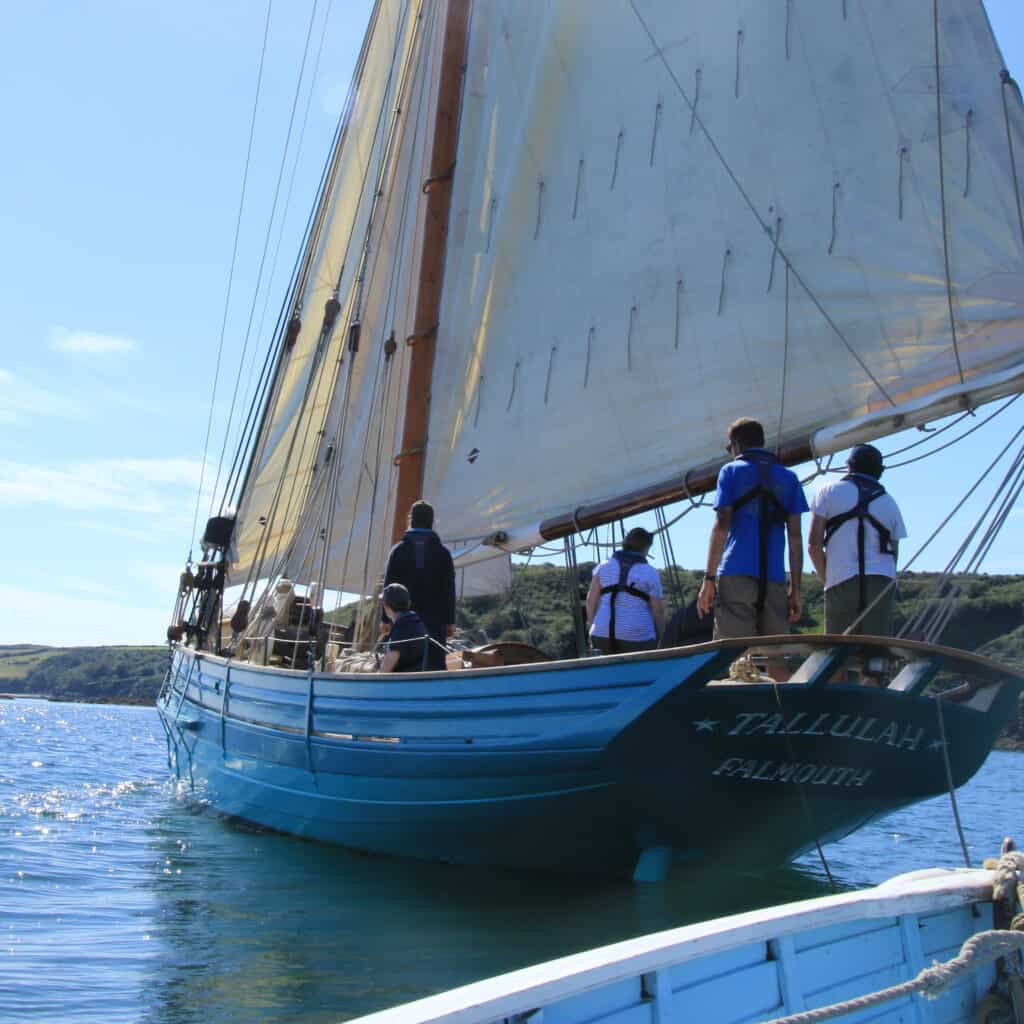
Why Learn the Ropes on a Classic Boat?
The advantages of learning a RYA Course sailing onboard a traditional boat are many fold:
Deep keeled gaff cutters are great for beginner which gives them a sea kindly motion, un-cluttered decks and high sides so you can walk safely down the deck without side stepping down a narrow strip of plastic deck.
All the ropes are in the open so you can see were they go and what they do, nothing is hidden in masts and booms. Without the mechanical advantage of winches you are more aware of the forces of nature and working as a team builds friendships and adds to the pleasure. Why fight nature when you can harness it in safe traditional ways.
Our classic boats have all mod cons for a RYA Course, GPS, depth sounders and there are plenty of yachts around in port and out on the water to show you self tailing winches, jamming cleats and more 20th century fittings and features of the sailing world.
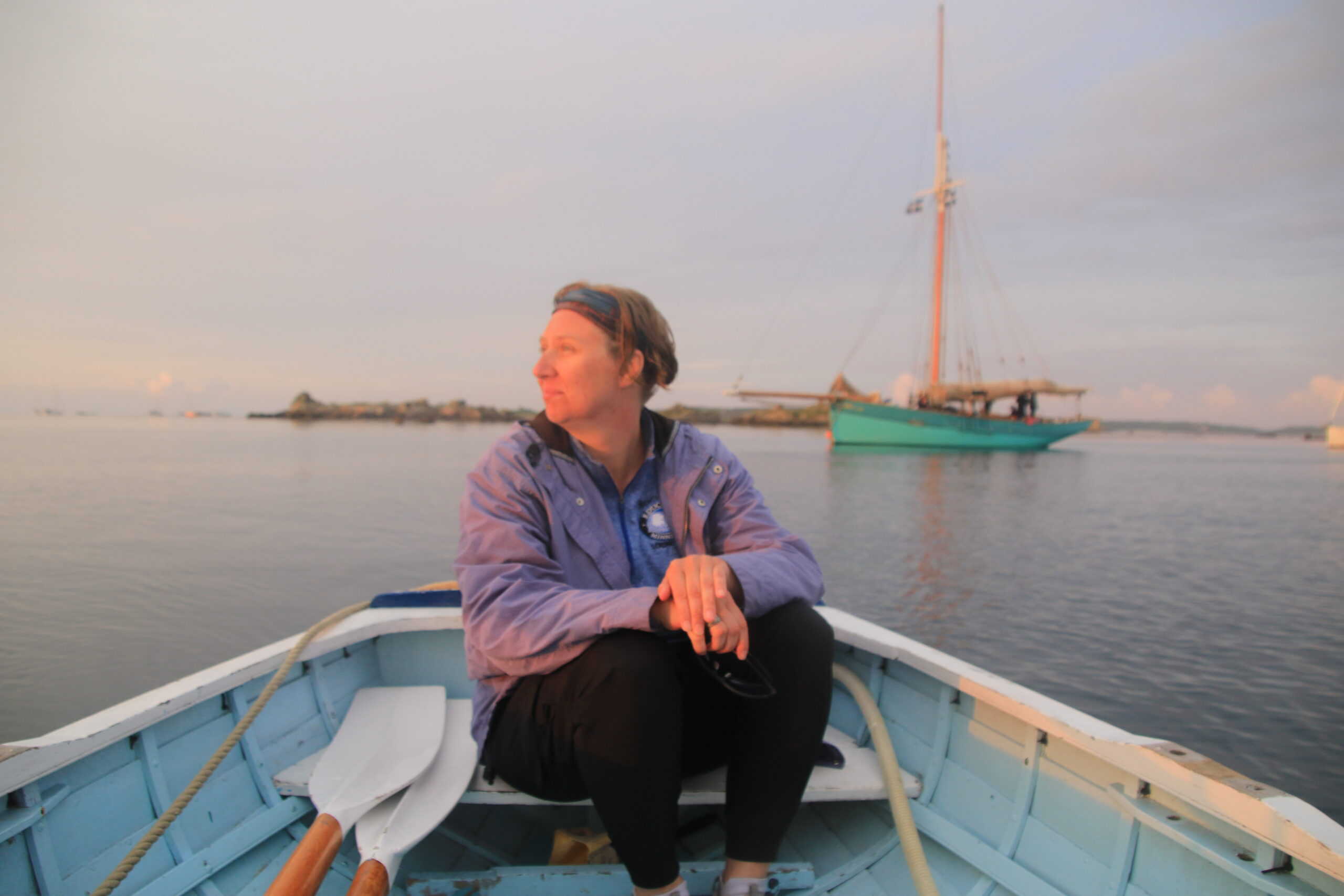
Why Learn to Skipper on a Boat with a Bowsprit?
It’s a great opportunity to pose.
Having a big pointy thing out the front, does help concentrate the mind and think ahead.
Manoeuvring under power you learn how to glide effortlessly and gently to a pontoon or quay. You are actually learning to ‘park’ a vessel that might be 59ft long with the bowsprit, so your instructor is not going to squeeze you into a small marina….and it is a huge buzz to bring a beautiful boat alongside under its own momentum.
Sail balance is important on all vessels but learning on a gaffer with a bowsprit or a yawl with two masts starts to teach you skills that can be applied to much bigger sailing vessels. When you get that dream job on a super yacht with three masts you will have more idea which sails to put up and in which sequence.
For skippers, the stable motion of a deep keeled vessel and a large chart table makes learning to navigate a lot easier than on many modern vessels.
Success aboard distinctive classic boats comes with a sense of achievement unmatched on a modern yacht. Your colours fly just that little bit higher.

Tallulah’s skipper and RYA instructor Debbie Purser has been teaching RYA courses on pilot cutters since 2003. She and other RYA instructors like Lara Bonney, Diggory Rose and James MacKenzie developed the teaching methods to offer the RYA syllabus for all courses on these seaworthy, long keeled boats that behave a bit differently from production yachts. Some things are easier, like walking down the deck in a bouncey sea, or ferry gliding onto a pontoon. Other things take a bit more teamwork than a small teaching yacht, like picking up a mooring under sail. Over 700 people learned RYA sailing skills and upwards of 3500 customers came sailing on our first pilot cutter 38ft Eve of St Mawes.
Classic Sailing now offer RYA courses on Eve’s slightly bigger sister Tallulah. This Luke Powell designed pilot cutter is 44 ft on deck and a fast and well behaved boat to sail. Her mainsail was deliberately smaller so her previous owners could handle her as a couple, but in light winds she has a powerful No1 jib with roller furling, a staysail you can reef and a large topsail. When the wind picks up we have a smaller jib or storm jib, the main can be reefed.
Tallulah runs RYA Competent Crew, RYA Day Skipper and Yachtmaster Exam Prep courses from St Mawes with the Cornish and Devon coasts to explore.
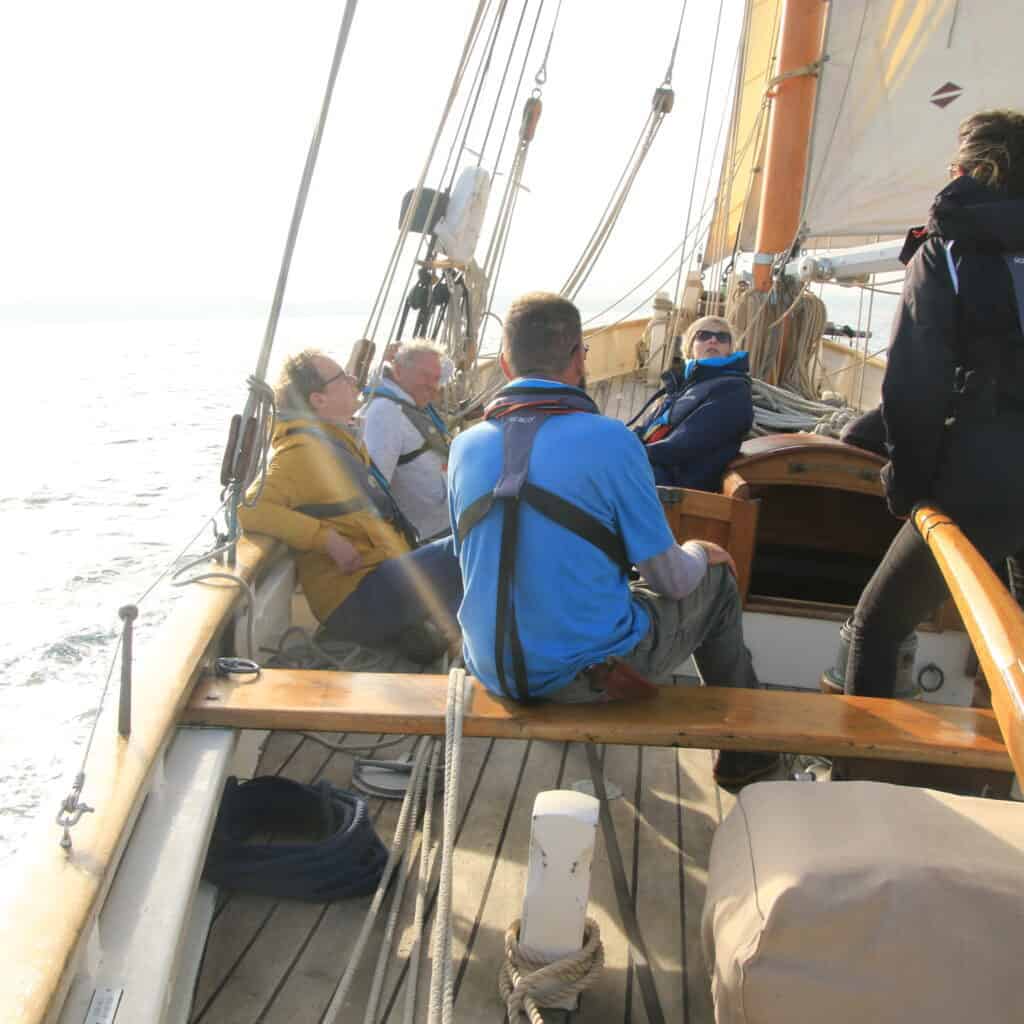
Classic Sailing can also offer the following:
- S ailing lessons and tuition on all our vessels as part of your holiday
- Over 60 mile passages for your Yachtmaster Offshore qualifying experience
- Over 600 mile ocean passages for astro-nav / Ocean YachtMaster – ask us, as you have to be a watch keeper
- MCA / STCW 95 Eligible sea time for super yachts and tall ships
- Advice on Super Yacht / Sail Training Professional Career Path- from Yacht Rating – Officer of the Watch – Chief Mate – up to Master (yacht 3000 ton)
You are more aware of the forces of nature and how you must work with the wind rather than fight it” Andrew Green
Blog search
Latest Posts
09/05 Inspiration
Top Tips for Your First Traditional Sailing Holiday
09/11 Careers
The Way to a Crew’s Heart… The Role of the Ship’s Cook
08/29 Careers
Writing Your Sailing CV
Voyages for all the Family
More Stories
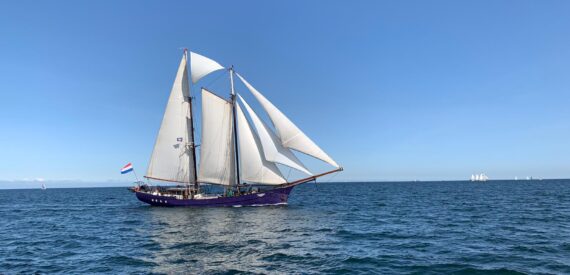
05/09 Inspiration
No Experience Required Ready to Sail? If you’re thinking about trying traditional sailing, no experience is necessary. Whether you’re a complete beginner or a

11/09 Careers
Having taken a job as vessel manager at a heritage harbour a few years ago I was described (behind my back) as a ‘jumped-up
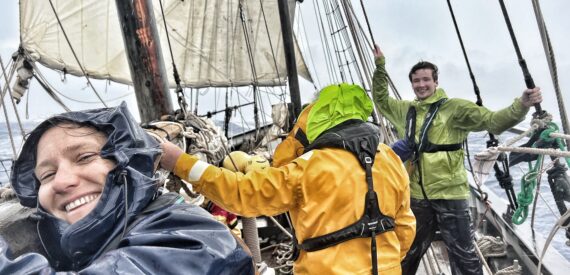
29/08 Careers
Get Noticed for Your Next Volunteering or Crewing Role Having been involved with the management of various ships, as well as volunteer and trainee

- Yacht Charters
- Experiences
- Kayak Tours
Royal Yachting Association
Learn to crew or skipper a yacht.
Manly Sailing works with an accredited Royal Yachting Association teaching centre, for adult yacht training. The talented instructors can take you from complete beginner to qualified skipper in a matter of weeks!
Why choose RYA?
RYA is an internationally accredited global leader and trusted standard of excellence in yacht training, maritime certification, and safety.
Manly Sailing and it’s partners have a team of instructors who are passionate about sailing and have years of experience
Options to learn the differences between monohulls and catamarans. Gain experience on both.
We can arrange a bespoke training programme for you, based on your experience and availability

Your sailing pathway
Not sure where to begin? Click here and fill out a quick form telling us about your sailing experience and goals, and we’ll be in touch with the most appropriate options!

Learn to Crew
Rya competent crew certificate.
Become a confident and effective crew member
Includes marine safety, anchoring and mooring, wind awareness, terminology, knots
Practical hands on course
Suitable for those with some basic sailing experience. If you’re a complete beginner, complete our Australian Sailing course first , or choose a learn-to-sail holiday .
Recognition of prior learning and shortened course options available
Practical 5 day course $1,950
Learn to Skipper
Rya day skipper.
For experienced sailors looking for a certification allowing them to charter a yacht
5 day course including 1 night passage
Includes inshore or close offshore passages
Optional theory study recommended (not included)
Qualifies for an International Certificate of Competence upon completion of all steps
Extra fees for ICC issue and VHF Radio Course.
RYA Costal Skipper
Includes inshore and offshore passages
Must complete theory examination (not included)
Option for some experience on catamaran
5 day live aboard practical $2,125
Upcoming training dates
All days are 9am-5pm except the days in which the night passage is completed.
There are a number of courses scheduled (weekdays and weekends). Get in touch to find one that suits you.
Catamaran training
Looking to charter a catamaran for your sailing holiday? Need to gain handling experience on this popular vessel type?
Get in touch to discuss.
Sailing Holidays
Choose a one or two week sailing holiday, and fast-track your progression toward chartering your own yacht! Our day skipper course include your radio licence, our costal skipper course includes radio licence and online theory.
Crew Course Sailing Holiday
Complete course, suitable for absolute beginners
7 day course. Option for live-aboard
2 days on keelboats, 5 days including one night sail on 40ft yacht
Free twilight yacht race included
RYA Skipper Sailing Holiday
Rya day skipper and costal skipper sailing holidays.
Suitable for sailors certified to RYA Competent Crew / RYA Day Skipper level or equivalent.
5 days inc one night sail on 40ft yacht
2x free twilight yacht races included to build sea time and experience
Marine Radio course included
Frequently Asked Questions
How do i apply for an international certificate of competence.
In order to receive the International Certificate of Competence (ICC), you must:
- Successful complete RYA Day Skipper course
- Pay your $89 VHF Licence Fee (directly to the Office of Maritime Communications)
- Pay the $50 fee charged by RYA for an issue of the ICC certificate (free if you are an RYA member)
What is the minimum age to complete RYA training?
Competent Crew Certificate – 14 years of age
Day Skipper – 18 years of age
Costal Skipper – 18 years of age
Can we book a private course?
If you have a group of friends or family looking for private lessons in yachting, please contact us for private rates.
We can organise sessions where all participants are working towards the same, or different qualifications (ideal for family groups).
I have no experience - where do I start?
Welcome to the world of sailing!
If you’re only available on weekends, we suggest starting with an Australian Sailing Start Crewing course on the keelboats, then progressing to the Royal Yachting Association certificates.
If you have a week to spare, consider our learn-to-sail holiday , which includes two introductory days on the keelboats before four days on Solace.
Get in touch if you have any questions about these options!
Manly Sailing Ground Floor Manly Yacht Club East Esplanade Manly NSW 2095
- (02) 9977 4000
- [email protected]
- Monday – Sunday: 9am – 5pm (office)
RECENT POSTS
- Women’s Regatta 24th March February 13, 2024
- Sailing Grand Prix – 24th & 25th February February 6, 2024
- Australia Day Live! January 22, 2024
Make a Booking Contact Us Seasonal Jobs News
| Help |
- How it works
- Frequently asked questions
RYA Courses
- Competent Crew Course 5 courses
- Day Skipper Course 8 courses
- Coastal Skipper Course 1 course
- Yachtmaster RYA Courses 8 courses
- ⭐ What is RYA? The Royal Yachting Association is the body of the United Kingdom that has delegated the development of training programs and the issuance of certificates to sailors, through its approved centers.
- ✅ Are RYA certificates internationally valid? Yes, the RYA is highly prestigious and its certificates are internationally recognized, which will make it easier for you to navigate or rent boats in other countries.
- ➡️ Can I sail with a RYA certificate in Spain? Currently, Spanish regulations do not allow citizens of Spanish nationality to navigate as a skipper with a RYA certificate. On the contrary, those who can prove their residence in the United Kingdom at the time they obtained the certificate can do so.
- ✍ What certificates of competence can we find in the RYA? The certificates of competence that can be obtained are the following: RYA Advanced PowerboaT; RYA Yachtmaster Coastal; RYA Yachtmaster Offshore; RYA Yachtmaster Ocean.
- ⚡ How much does a RYA course cost? The price of a RYA course varies widely. The difference depends on the area, the type of course and the quality of the school.
- ❗ How many cruise sailing courses are there in the RYA? The most common cruising sailing courses are Competent crew; Day Skipper; Coastal Skipper and Yachtmaster.
What is the Royal Yachting Association (RYA)?
¿qué cursos puedo obtener en la rya.
- Competent crew.
- Day Skipper.
- Coastal Skipper.
- Yachtmaster.
- RYA Advanced Powerboat.
- RYA Yachtmaster Coastal.
- RYA Yachtmaster Offshore.
- RYA Yachtmaster Ocean.
Can I work as a skipper with a RYA course?
- RYA Advanced Powerboat Certificate of competence.
- RYA Yachtmaster Coastal Certificate of competence.
- RYA Yachtmaster Offshore Certificate of competence.
- RYA Yachtmaster Ocean Certificate of competence
Are RYA certificates internationally valid?
- We call you
- Write us by WhatsApp Talk to us at +39 065 326 613 4
- Contact Form We write your needs or doubts
- Shall we call you? Leave us your number and we will call you
Got a Question?
Complete our short form for a prompt response and world class tax advice.
Yes please contact me regarding mortgages
By selecting this, you agree to the Privacy Policy .
Sign in to your account
Ml5 medical certificate - a guide for seafarers.

A Seafarer medical report ML5 is a medical certificate that’s required for seafarers working onboard a ship in the UK.
It confirms that a seafarer is medically fit to work at sea.
In particular, the ML5 medical certificate if for:
- Individuals applying for, revalidating, or changing their MCA Boatmaster's Licence or certificate.
- Individuals applying for a Royal Yacht Association (RYA) commercial endorsement for working on code vessels.
- Crew members working on a seagoing or domestic passenger vessel.
- Individuals working on a fishing vessel under 24m in length that is not subject to inspection in a foreign port, at sea for more than 72 hours or operating more than 200 miles from the coastline of the UK or beyond the continental shelf.
In this article, we take a deeper look into the certificate, and uncover who requires one, where to get one and what’s involved.
What is an ML5 Medical Certificate?
Who needs an ml5 medical certificate, when should i book my ml5 medical exam, where can i get an ml5 medical exam done, how much does an ml5 medical exam cost, what happens during an ml5 medical exam, is drug screening part of an ml5 medical exam, poor eyesight, cardiovascular issues, hearing problems, medical conditions, medications, alcohol use.

An ML5 Medical Certificate is a medical document that confirms a seafarer's medical fitness to work onboard a sea vessel.
Although similar in nature, this is not the same as an ENG 1 medical certificate .
An ML5 is issued following a thorough medical examination by any GMC registered doctor or another recognised flag state authority.
The ML5 Medical Certificate indicates that the seafarer meets the medical standards required by the International Maritime Organisation (IMO) and the MCA.
The ML5 Medical Certificate is an important document for seafarers as it’s a legal requirement for anyone working on a ship.
The certificate is valid for up to five years, although it may be renewed or suspended if the seafarer's health condition changes or if they’re injured or fall ill while working at sea.
If you work on board a ship or yacht, you will need to have a valid ML5 medical certificate to demonstrate that you are fit to work at sea. This includes:
- Master of a passenger ship (Class IV or V) that doesn't go to sea.
- Master of a commercial vessel that doesn't go to sea.
- Master or crew member of a small commercial vessel with Area Category 2 to 6 certification, operating within 60 miles of a safe haven.
- Crew member or other personnel (e.g. catering staff) working on a domestic passenger ship (Class VI or VIA) that goes to sea.
- Individuals applying for, renewing, or modifying their MCA Boatmaster's Licence or certificate.
- Individuals applying for a commercial endorsement from the Royal Yacht Association (RYA) to work on code vessels.
This certificate sets out minimum requirements for working conditions, including medical fitness, for seafarers.
The ML5 certificate is a medical report completed by a certified doctor.
The process includes a thorough physical examination of the seafarer and a review of their medical history, as well as tests that may include:
- height and weight.
- physical health.
- mental health.
- colour vision.
- blood pressure.
- lung function.
- other relevant medical conditions.
Having an ML5 medical certificate is crucial for seafarers, as it demonstrates that they meet the minimum medical requirements for working on board a ship or yacht.
Without this certificate, seafarers may not be permitted to work at sea and could risk losing their job or being denied employment opportunities.
The certificate is valid for up to two years, depending on the age and medical condition of the seafarer, and must be renewed periodically.
It’s recommended to book your ML5 medical exam well in advance of the expiration date of your current ML5 medical certificate.
The exact time frame will depend on the requirements of the employer or organisation you are applying to and the time it takes to receive your results and certificate.
However, it’s generally advisable to book your medical exam at least several weeks before your current certificate expires to ensure that you have sufficient time to complete the exam, receive your results, and submit your application form.
It’s important to note that if you continue to work on a vessel without a valid ML5 medical certificate, you may be in breach of regulations and could face legal ramifications.
ML5 medical examinations can be conducted by any GMC registered doctor to carry out seafarer medical examinations.
These doctors are known as General Medical Council doctors.
You can find a list of General Medical Council doctors online or by contacting your nearest MCA Marine Office .
It's important to book your medical exam with an approved doctor to ensure that your ML5 medical certificate is recognised by the correct authorities.
The ML5 form is designed in a yes/no format.
If any checkboxes are marked 'Yes', then the doctor completing the form cannot issue the certificate.
The applicant would need to apply to the MCA for this to be assessed.
The process is detailed in the form or in MGN 640 .
In the UK, the cost of an ML5 medical exam can range from £65 upwards.
It’s important to note that additional fees may apply for any necessary laboratory tests or other medical evaluations that are required to complete the examination.
At the time of the medical, you are advised to bring along your:
- A photo ID.
- Your driving glasses/contact lenses and prescription.
- Details of any ongoing medical conditions, including any medication you are taking.
- ML5 Medical Certificate/Form.

During an ML5 medical exam, the doctor will carry out a medical examination to assess your fitness to work at sea.
The examination will include a review of your medical history and any ongoing medical conditions, as well as an assessment of your physical and mental health.
The doctor may ask you questions about your lifestyle, such as whether you smoke or drink alcohol, as well as questions about any previous injuries or illnesses.
They may also check your vision and hearing, take your blood pressure and perform a general physical examination.
In addition, the doctor may require you to provide a urine sample to test for any underlying medical conditions.
The examination will typically take around 30 minutes to an hour to complete.
Once the examination is complete, the doctor will complete the ML5 medical certificate/form, indicating whether or not you are fit for seafaring work aboard a yacht.
If there’s any concerns about your fitness to work, the doctor may refer you for further testing or assessment.
Drug screening is not typically part of an ML5 medical exam.
The purpose of an ML5 medical exam is to assess the overall health and fitness of a person to perform their duties safely and effectively onboard a vessel.
However, depending on the specific requirements of the employer or maritime authority, drug screening may be required as a separate test or as part of a broader medical examination.
It's always best to check with the relevant authority or your employer for specific requirements.
Reasons Why People Fail ML5 Medical Exams
There’s several reasons why people fail ML5 medical exams, including:
Poor eyesight is a common reason for failing an ML5 medical exam.
If your eyesight doesn't meet the minimum requirements, you may need to wear corrective lenses or glasses to pass the exam.
If you have a history of cardiovascular issues or high blood pressure, it may affect your ability to pass the medical exam.
Hearing problems can also be a reason for failing the exam.
If you have hearing loss, you may need to wear hearing aids to pass.
If you have any medical conditions that affect your ability to work on a vessel or affect your safety, you may fail the exam.
Certain medications can disqualify you from passing the medical exam, especially if they have side effects that can affect your ability to work safely on a vessel.
Drug use can be detected during the medical exam, if carried out, and can disqualify you from getting an ML5 medical certificate.
Alcohol use can also affect your ability to pass the medical exam.
If you have a history of alcoholism or abuse, you may need to provide evidence that you are receiving treatment and are stable before you can pass the exam.
Before embarking on a career in yachting , obtaining the ML5 medical certificate is one of the primary requirements.
Understanding the process and acquiring the certificate will enable you to smoothly navigate through the initial stages of your yachting career.
And remember, if you have questions about a career in yachting, including anything from getting certified to work at sea, to calculating tax on your earnings , we want to hear from you.
At Marine Accounts, we’re happy to guide everyone, whether you’re just starting your career in yachting, or are a seasoned yachtie wanting to ask us anything relating to seafarers tax .
Don’t hesitate to get in touch!
Disclaimer: Any advice in this publication is not intended or written by Marine Accounts to be used by a client or entity for the purpose of (i) avoiding penalties that may be imposed on any taxpayer or (ii) promoting, marketing or recommending to another party matters herein.
Also on Marine Accounts
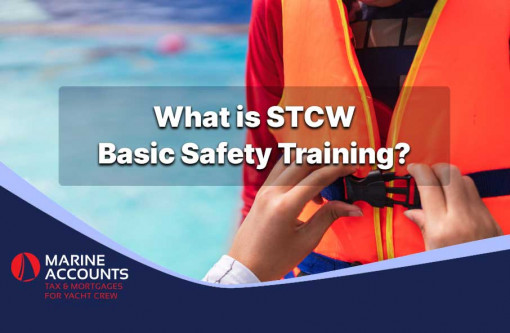
What is STCW Basic Safety Training?
If you're considering a career in the yachting industry, gaining a STCW Basic Safety Training certificate is a must. Read our article to learn more about this course and what it entails.
Patrick Maflin
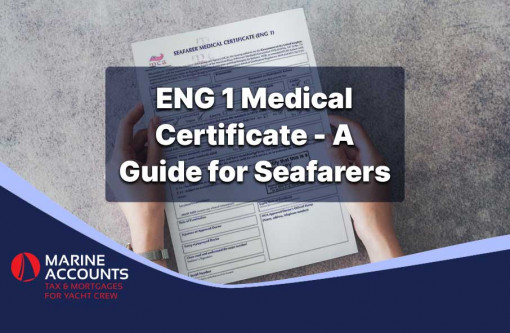
ENG 1 Medical Certificate - A Guide for Seafarers
If you're planning a career yachting, having a valid ENG 1 Medical Certificate is a must to prove you are fit and healthy to work at sea. Find out more about this health certificate and how to get one.
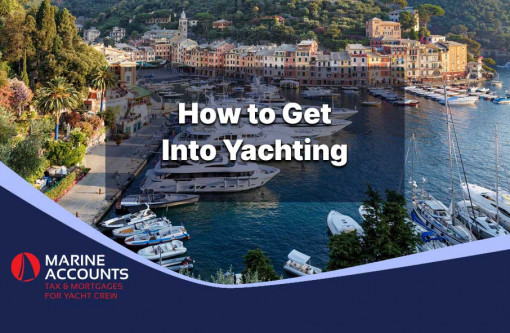
How to Get Into Yachting
Working on a superyacht has numerous appealing features, with various tax advantages associated with such a career move. But how do you get into yachting? Read our comprehensive article to find out.
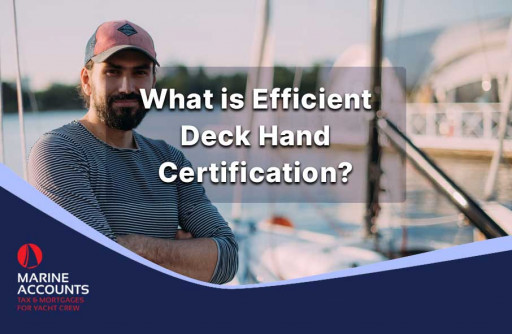
What is Efficient Deck Hand Certification?
Anyone needing a good understanding of shipboard operations needs to get efficient deck hand certification. But what is it? Read on to discover more.
Before you go...
You're about to visit a page on our legacy site. We're currently in the process of updating all our tax tools and while this page is still active please return to the main Marine Accounts site after completition.
Refer a friend and receive £50!
Upon successful completion of the referral the cash will be transferred to you.

The Green Blue Announces Launch of 2024-25 University Sailing Sustainability Challenge with new sponsorship by Royal Thames Yacht Club
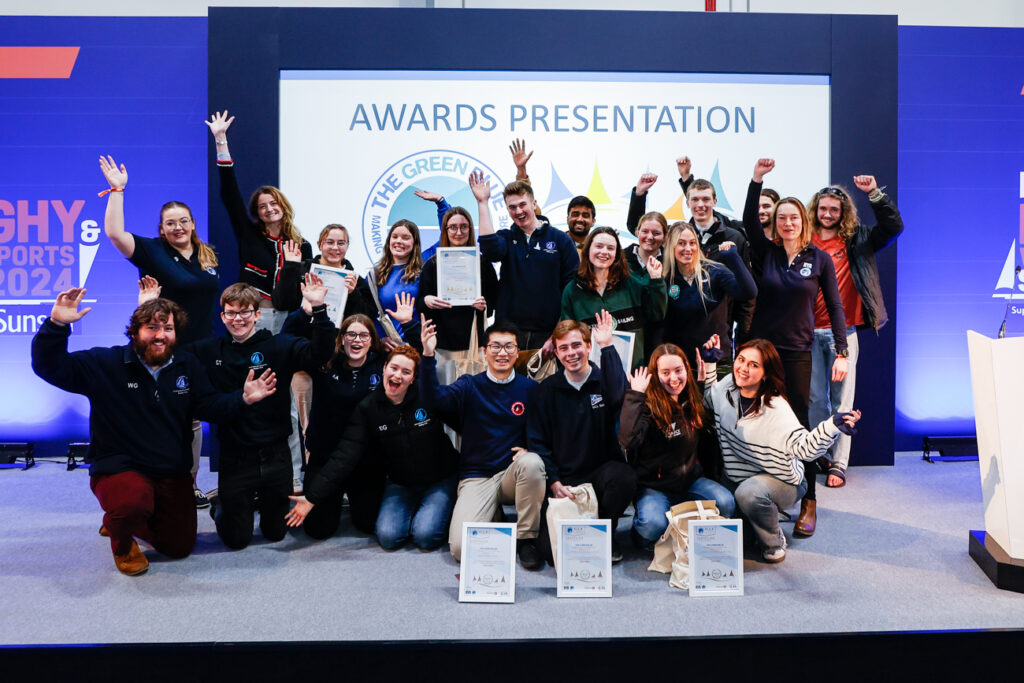
19 th September 2024 – The Green Blue is thrilled to announce the launch of the 2024-25 University Sailing Sustainability Challenge (USSC) , beginning on 1 st September 2024 and running until February 2025.
Since its inception in 2015, the USSC has encouraged University Sailing Clubs (USCs) across the UK to adopt more sustainable practices, and this year marks a significant milestone. The challenge welcomes the Royal Thames Yacht Club as its new sponsor, bringing fresh energy and support to the challenge.
In addition to this new partnership, the 2024-25 Challenge introduces a revamped judging criterion, allowing clubs to be even more creative and flexible in their approach to sustainability.
Supported by the British Universities Sailing Association (BUSA), the USSC was created to help University Sailing Clubs (USCs) across the UK become more sustainable. Clubs participate in the challenge by appointing a Sustainability Officer who in turn will commit to The Green Blue Boating Pledge . They then select areas of focus from eight categories, including reducing waste, protecting biodiversity, and combating climate change.

Over the course of the challenge, clubs, and their Sustainability Officers complete tasks within their four chosen categories with the aim of submitting evidence of their work to the USSC judging panel.
An exciting opportunity for clubs and students to really show what they can do; the panel awards all clubs who participate and complete their tasks with an official USSC certificate of achievement. The judging panel also score all submissions with the top four participants being selected to receive a prize at the USSC Awards Ceremony, held during the prestigious RYA Dinghy & Watersports Show in February 2025.
“The younger generation of sailors are the future of the sport and it’s amazing how many of them are passionate about sustainability. By getting involved in the USSC, it’s a great way for individuals and university clubs to not only earn recognition but also set an example for the wider boating community. The work they do can make a real difference in protecting the environment, both in the present and for years to come.” said Kate Fortnam, Campaign Manager at The Green Blue.
Last year an impressive 14 universities successfully completed the Challenge, showcasing their dedication to fostering sustainable values within their clubs. This year, with the support of the Royal Thames Yacht Club, The Green Blue anticipate even greater participation and impact.
“At the Royal Thames Yacht Club, we are committed to the adoption of sustainable practices both within the Club and on the water, and as such are delighted to be supporting the excellent University Sailing Sustainability Challenge. Our young people are the future, and it is critical that future is sustainable. May we thank all participants in this most worthy of causes.” said Richard Powell, Vice Commodore at the Royal Thames Yacht Club.
“We, the university community, benefit hugely from being a part of then the green blue challenge. Through the challenge we push ourselves, our clubs, and the clubs we sail at, to be more sustainable and to look at the ways in which the sailing community can support the protection of our waterways and our planet” said Amelie Sadler, Vice Chair at BUSA – British Universities Sailing Association.
If your club would like to be part of the challenge, visit The Green Blue’s website to find out more, sign up or contact us at [email protected] .
Alternatively, you can Follow the journey of the Challenge on social media:
- Facebook: @ @TheGreenBlue
- Instagram: @the_green_blue
- X (formerly Twitter): @TheGreenBlue
- LinkedIn: @The Green Blue
For further information about the Royal Thames Yacht Club, visit www.royalthames.com.
Related posts
19th September 2024 – The Green Blue is thrilled to

Leading the Charge – record breaking young skipper proves capabilities of eBoating through Round Britain eRIB endurance challenge
We did it! 18-year-old Harry Besley has completed a never

The future looks bright for vessel recycling
A clean marine environment remains high on the agenda for
Sign up to our mailing list
Get all of the latest information, news and updates from the green blue.
The legal basis for processing that information shall be consent. You may withdraw your consent at any time by unsubscribing within a sent email. Your personal information will be stored in accordance with the RYA privacy policy

- Visit Our Blog about Russia to know more about Russian sights, history
- Check out our Russian cities and regions guides
- Follow us on Twitter and Facebook to better understand Russia
- Info about getting Russian visa , the main airports , how to rent an apartment
- Our Expert answers your questions about Russia, some tips about sending flowers

Russian regions
- Chelyabinsk oblast
- Khanty-Mansi okrug
- Kurgan oblast
- Sverdlovsk oblast
- Nizhny Tagil
- Tyumen oblast
- Yamalo-Nenets okrug
- Map of Russia
- All cities and regions
- Blog about Russia
- News from Russia
- How to get a visa
- Flights to Russia
- Russian hotels
- Renting apartments
- Russian currency
- FIFA World Cup 2018
- Submit an article
- Flowers to Russia
- Ask our Expert
Yekaterinburg city, Russia
The capital city of Sverdlovsk oblast .
Yekaterinburg - Overview
Yekaterinburg or Ekaterinburg (Sverdlovsk in 1924-1991) is the fourth most populous city in Russia (after Moscow, St. Petersburg, and Novosibirsk), the administrative center of the Ural Federal District and Sverdlovsk Oblast.
This city is one of the country’s largest transport and logistics hubs, as well as an important industrial center. It is unofficially called the “capital of the Urals.”
The population of Yekaterinburg is about 1,493,600 (2022), the area - 468 sq. km.
The phone code - +7 343, the postal codes - 620000-620920.
Ekaterinburg city flag
Ekaterinburg city coat of arms.
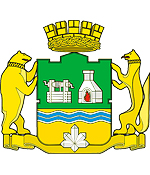
Ekaterinburg city map, Russia
Ekaterinburg city latest news and posts from our blog:.
26 May, 2020 / Unique Color Photos of Yekaterinburg in 1909 .
2 December, 2018 / Yekaterinburg - the view from above .
21 November, 2018 / Abandoned Railway Tunnel in Didino .
4 December, 2017 / Stadiums and Matches of the World Cup 2018 in Russia .
3 January, 2017 / Ekaterinburg, the Capital of the Urals: Then and Now .
More posts..
News, notes and thoughts:
4 April, 2011 / Free travel on new high-speed trains should allay fans' fears about long journey to Ekaterinburg - the most far-flung city on Russia's list of sites for 2018 World Cup. Let's hope the train will not break down in the middle of nowhere.
1 February, 2011 / Today is the 80th anniversary of the birth of Boris Yeltsin, the first president of Russia. President Medvedev today unveiled a monument to Yeltsin in his home city Ekaterinburg. First one in Russia.
History of Yekaterinburg
Foundation of yekaterinburg.
The territory along the Iset River, which served as a convenient transport route from the Ural Mountains deep into Siberia, has long attracted settlers. The oldest of the currently discovered settlements on the territory of present Yekaterinburg was located next to the Palkinsky Stone Tents rock massif and dates back to the 6th millennium BC.
From the 7th-3rd centuries BC, ancient metallurgists who mastered the smelting of copper lived in this settlement. Copper figures of birds, animals, people, arrowheads, various household items were found here. Later they learned how to make iron products. All discovered settlements were destroyed as a result of fires, possibly during raids of the conquerors.
The territory occupied by present Yekaterinburg became part of Russia in the middle of the 17th century. At that time, it had practically no permanent population. The first Russian settlements were founded in the second half of the 17th century. At the beginning of the 18th century, the first ironworks were built here.
In the spring of 1723, by decree of Emperor Peter I, the construction of the largest iron-making plant in Russia began on the banks of the Iset River. Construction began on the initiative of Vasily Tatishchev (a prominent Russian statesman). He was supported by Georg Wilhelm de Gennin (a German-born Russian military officer and engineer), on the initiative of which the fortress plant was named Yekaterinburg in honor of Empress Catherine I (Yekaterina in Russian), the wife of Peter I.
More Historical Facts…
The historic birthday of Yekaterinburg is November 18, 1723. On this day, a test run of the plant equipment was carried out. Its main products included iron, cast iron, and copper. In 1725, the Yekaterinburg Mint began production on the territory of the fortress and became the main producer of copper coins in the Russian Empire. Until 1876, it produced about 80% of the country’s copper coins. In the 1720s, the population of Yekaterinburg was about 4,000 people.
Yekaterinburg - one of the economic centers of the Russian Empire
In the middle of the 18th century, the first ore gold in Russia was discovered in this region, which was the beginning of the gold industry in the country. As a result, Yekaterinburg became the center of a whole system of densely located plants and began to develop as the capital of the mining region, which spread on both sides of the Ural Range.
In 1781, Catherine II granted Yekaterinburg the status of a county town in the Perm Governorate. The population of the town was about 8,000 people. In 1783, the town received a coat of arms depicting an ore mine and a melting furnace, which symbolized its mining and metallurgical industries (similar images are depicted on the current coat of arms and flag of Yekaterinburg).
In 1783, the Great Siberian Road was opened - the main road of the Russian Empire that passed through Yekaterinburg. It served as an impetus for the transformation of Yekaterinburg into a transport hub and a center of trade. Thus, Yekaterinburg, among other towns of the Perm Governorate, became the key town for the development of the boundless and rich Siberia, the “window to Asia”, just as St. Petersburg was the Russian “window to Europe.”
In 1808, the Yekaterinburg plant was closed, and the history of the town entered a new stage related to the development of a large regional center with a diversified economy. At the beginning of the 19th century, the gold mining industry flourished. At the same time, deposits of emeralds, sapphires, aquamarines, diamonds, and other precious, semiprecious, and ornamental stones were discovered in the Urals. Yekaterinburg became one of the world centers for their artistic processing.
After the abolition of serfdom in 1861, the mining industry of the Urals experienced a severe crisis, a number of plants were closed. In 1878, the first railway was constructed across the Urals and connected Yekaterinburg with Perm. In 1888, the Yekaterinburg-Tyumen railway was built, and in 1897 - the railway to Chelyabinsk, which provided access to the Trans-Siberian Railway. Yekaterinburg became a major railway junction, which contributed to the development of the local food industry, especially flour milling. In 1913, the population of Yekaterinburg was about 69,000 people.
Yekaterinburg in the first years of Soviet power
On November 8, 1917, Soviet power was established in Yekaterinburg. On April 30, 1918, the last Russian emperor Nicholas II and his family members with a few servants were transported from Tobolsk to Yekaterinburg. They were placed in the “House of Special Purpose”, the mansion of engineer Nikolai Ipatiev requisitioned for this purpose, and transferred under the supervision and responsibility of the Ural Regional Soviet.
In July 1918, units of the White Siberian army approached Yekaterinburg, under this pretext the leadership of the Ural Regional Soviet decided to shoot the imperial family. On the night of July 16-17, 1918, it was done in the basement of the Ipatiev House.
10 days later, units of the Czechoslovak Legion entered Yekaterinburg. Over the next 12 months, it was under the control of anti-Bolshevik forces. On July 14, 1919, the Red Army reoccupied the city. Soviet authorities and the Yekaterinburg Province with a center in Yekaterinburg were restored. In 1920, the population of the city was about 94,400 people.
The political center of the Urals moved from Perm to Yekaterinburg. In 1923, Yekaterinburg became the administrative center of the vast Ural Oblast, which in size exceeded the territory of the present Ural Federal District of Russia. In 1924, the city council decided to rename the capital of the new region to Sverdlovsk - in honor of Yakov Sverdlov, a Bolshevik party administrator and chairman of the All-Russian Central Executive Committee.
Sverdlovsk - a Soviet industrial giant
During the years of Stalin’s industrialization, Sverdlovsk was turned into a powerful industrial center. The old factories were reconstructed and new large factories were built, including giant machine-building and metal processing plants. In 1933, the construction of the future flagship of Soviet engineering (Uralmash) was completed. The population of Sverdlovsk grew by more than 3 times, and it became one of the fastest growing cities in the USSR.
January 17, 1934, Ural Oblast was divided into three regions - Sverdlovsk Oblast with a center in Sverdlovsk, Chelyabinsk Oblast with a center in Chelyabinsk, and Ob-Irtysh Oblast with a center in Tyumen. By the end of the 1930s, there were 140 industrial enterprises, 25 research institutes, 12 higher educational institutions in Sverdlovsk. In 1939, the population of the city was about 425,500 people.
Along with other Ural cities, Sverdlovsk made a significant contribution to the victory of the USSR in the Second World War. In total, more than 100,000 residents of the city joined the Red Army. 41,772 people didn’t return from the war: 21,397 - killed in battles, 4,778 - died from wounds in hospitals, 15,491 - went missing, 106 - died in prisoner of war camps.
Sverdlovsk became the largest evacuation point, more than 50 large and medium enterprises from the western regions of Russia and Ukraine were evacuated here. During the war years, industrial production in Sverdlovsk grew 7 times.
After the war, this city became the largest center for engineering and metalworking in Russia. During the Cold War, Sverdlovsk, as a key center of the defense industry, was practically closed to foreigners. In 1960, in the sky above the city, Soviet air defense shot down the U-2 spy plane of the US manned by Francis Gary Powers.
On January 23, 1967, a millionth resident was born in the city and Sverdlovsk became one of the first Russian cities with a population of more than 1 million people. In 1979, Sverdlovsk was included in the list of historical cities of Russia.
On October 4, 1988, a serious accident occurred at the Sverdlovsk railway station. The train carrying almost 100 tons of explosives rolled downhill and crashed into a coal freight train. An explosion occurred, aggravated by the proximity of a large warehouse of fuels and lubricants. The funnel at the site of the explosion had a diameter of 40-60 meters and a depth of 8 meters, the shock wave spread 10-15 kilometers. The explosion killed 4 people at the station and injured more than 500 people. About 600 houses were severely damaged.
Yekaterinburg - one of the largest cities of the Russian Federation
On September 4, 1991, the Sverdlovsk City Council of People’s Deputies decided to return the city its original name - Yekaterinburg. The population of the city was about 1,375,000 people. The restrictions on foreign visitors to the city were also lifted, and soon the first consulate general was opened here - the United States of America (in 1994).
The transition to a market economy led to a reduction in production at industrial enterprises, inert giant plant found themselves in a particularly difficult situation. In 1991, the construction of the television tower was stopped. The city was flooded with chaotic small retail trade in temporary pavilions and markets. These years were the heyday of organized crime, Yekaterinburg became one of the “criminal capitals” of Russia. The economic situation began to improve by the end of the 1990s.
In 2000-2003, the Church on Blood in Honour of All Saints Resplendent in the Russian Land was built on the site of the Ipatiev House in Yekaterinburg. In 2008-2009, the Koltsovo Airport was reconstructed. In June 15-17, 2009, SCO (Shanghai Cooperation Organization) and BRIC (Brasilia, Russia, India, China) summits were held in Yekaterinburg.
In 2015, the Presidential Center of Boris Yeltsin, the first president of Russia, was opened in Yekaterinburg. On March 24, 2018, the abandoned unfinished television tower was dismantled. It was the tallest building in the city (almost 240 meters) and became one of the symbols of Yekaterinburg. 4 matches of FIFA World Cup 2018 were played in Yekaterinburg.
Today, Yekaterinburg is the largest center of attraction not only of Sverdlovsk Oblast, but also of the surrounding regions. By some socio-economic indicators, this city ranks third in Russia, after Moscow and St. Petersburg. Along with the development of trade and business, the city lost the status of the country’s largest industrial center.
On the streets of Yekaterinburg

Soviet-era apartment buildings in Yekaterinburg
Author: Alex Kolm

In the central part of Yekaterinburg
Author: Serg Fokin
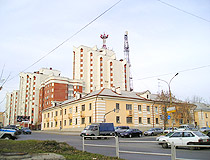
Yekaterinburg street view
Author: Krutikov S.V.
Yekaterinburg - Features
Yekaterinburg is located in the floodplain of the Iset River on the eastern slope of the Middle Urals in Asia, near its border with Europe, about 1,800 km east of Moscow. Since the Ural Mountains are very old, there are no significant hills in the city.
This relief was a favorable condition for the construction of the main transport routes from Central Russia to Siberia (the Siberian Route and the Trans-Siberian Railway) through Yekaterinburg. As a result, it has become one of the most strategically important centers of Russia, which still provides a link between the European and Asian parts of the country.
Yekaterinburg is located in the border zone of temperate continental and continental climates. It is characterized by a sharp variability in weather conditions with well-defined seasons. The Ural Mountains, despite their low height, block the way to the masses of air coming from the west from the European part of Russia.
As a result, the Middle Urals is open to the invasion of cold Arctic air and continental air of the West Siberian Plain. At the same time, warm air masses of the Caspian Sea and the deserts of Central Asia can freely enter this territory from the south.
That is why the city is characterized by sharp temperature fluctuations and the formation of weather anomalies: in winter from severe frosts to thaws and rains, in summer from heat above plus 35 degrees Celsius to frosts. The average temperature in January is minus 12.6 degrees Celsius, in July - plus 19 degrees Celsius.
The city has a rather unfavorable environmental situation due to air pollution. In 2016, Yekaterinburg was included in the list of Russian cities with the worst environmental situation by this indicator. Car emissions account for more than 90% of all pollution.
Yekaterinburg ranks third in Russia (after Moscow and St. Petersburg) in the number of diplomatic missions, while their consular districts extend far beyond Sverdlovsk Oblast, and serve other regions of the Urals, Siberia, and the Volga region.
In terms of economy, Yekaterinburg also ranks third in the country. It is one of the largest financial and business centers of Russia. The main branches of production: metallurgical production and metalworking, food production, production of electrical equipment, electronic and optical equipment, production of vehicles, production of machinery and equipment, chemical production.
Almost all types of urban public transport are presented in Yekaterinburg: buses, trolleybuses, trams, subways, taxis. Yekaterinburg is the third largest transportation hub in Russia: 6 federal highways, 7 main railway lines, as well as Koltsovo International Airport, one of the country’s largest airports. The location of Yekaterinburg in the central part of the region allows you to get from it to any major city of the Urals in 7-10 hours.
Yekaterinburg has an extensive scientific and technical potential, it is one of the largest scientific centers in Russia. The Presidium and about 20 institutes of the Ural Branch of the Russian Academy of Sciences, 66 research institutes, and about 30 universities are located here.
This city is a relatively large tourist center. A significant part of tourists visit it to honor the memory of the last Russian emperor and his family killed by the Bolsheviks in the basement of the Ipatiev House in 1918.
There are about 50 different museums in Yekaterinburg. One of the world’s largest collections of constructivist architectural monuments has been preserved here. In total, there are over 600 historical and cultural monuments in the city, of which 43 are objects of federal significance. The City Day of Yekaterinburg is celebrated on the third Saturday of August.
Interesting facts about Yekaterinburg
- It was founded by the decree of the first Russian Emperor Peter I and the last Russian Emperor Nicholas II was shot here;
- In 1820, the roof of the UK Parliament building in London was made of roofing iron produced in Yekaterinburg;
- Ural steel was used in the construction of the Eiffel Tower in Paris;
- Ural copper was used in the construction of the Statue of Liberty in New York;
- During the Second World War, Sverdlovsk was the center of broadcasting in the USSR;
- Equipment for the world’s deepest borehole (Kola Superdeep Borehole, 12,262 meters) was produced in Yekaterinburg;
- Boris Yeltsin, the first president of Russia, began his political career in Yekaterinburg;
- Minor planet #27736 Yekaterinburg, discovered by the Belgian astronomer Eric Elst on September 22, 1990, was named in honor of this city;
- Two most northern skyscrapers in the world are located in Yekaterinburg: the Iset residential tower (209 m) and the Vysotsky business center (188 m), they are the tallest buildings throughout Russia east of Moscow.
Pictures of Yekaterinburg

Yekaterinburg city view
Author: Andrey Zagaynov

Modern architecture in Yekaterinburg
Author: Yury Baranov
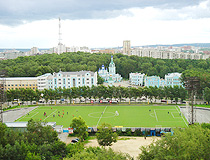
The territory of the central stadium of Yekaterinburg before reconstruction
Author: Sergey Likhota
Main Attractions of Yekaterinburg
Sevastyanov House - a palace of the first quarter of the 19th century built in the architectural styles of pseudo-Gothic, Neo-Baroque, and Moorish traditions and painted in green, white, and red tones. Today, it is the most beautiful building in Yekaterinburg and one of its symbols. The house stands on the promenade of the Iset River, very close to the city dam. Lenina Avenue, 35.
“Plotinka” - the dam of the city pond on the Iset River built in the 18th century. From an architectural point of view, it is an ordinary bridge. However, it is of particular importance for the residents of Yekaterinburg since the construction of the entire city started from this place. Today, this is the main place for festivities in Yekaterinburg. Lenina Avenue.
Observation Deck of the Business Center “Vysotsky” - an open-air observation deck on the 52nd floor at an altitude of 168 meters. From here you can enjoy the views of all of Yekaterinburg. On the second and third floors of this skyscraper there is the memorial museum of Vladimir Vysotsky - a singer, songwriter, and actor who had an immense effect on Soviet culture. Malysheva Street, 51.
Vaynera Street - the central avenue of Yekaterinburg, the so-called “Ural Arbat”. One of its parts from Kuibysheva Street to Lenina Avenue is a pedestrian street. This is one of the oldest streets in Yekaterinburg laid in the middle of the 18th century. Along it, you can see merchant mansions, shops, administrative buildings, most of which were built in the late 19th and first half of the 20th centuries.
Rastorguev-Kharitonov Palace (1794-1824) - one of the most valuable architectural manor and park ensembles in Yekaterinburg, an architectural monument of federal significance built in the classical style and located in the city center. Karla Libknekhta Street, 44.
Church of the Ascension (1792-1818) - one of the oldest churches in Yekaterinburg located next to the Rastorguev-Kharitonov Palace. This beautiful building combines the features of baroque, pseudo-Russian style, and classicism. Klary Tsetkin Street, 11.
Yeltsin Center - a cultural and educational center dedicated to the contemporary history of Russia, as well as the personality of its first president, Boris Yeltsin. The museum dedicated to his life is one of the best museums in Russia. Borisa Yeltsina Street, 3.
Yekaterinburg Museum of Fine Arts - the largest art museum in the Urals housed in two buildings. This museum is best known for its unique collection of Kasli art castings and the world-famous Kasli cast iron pavilion - a participant in the 1900 Paris World’s Fair.
The following collections can also be found here: Russian paintings of the 18th - early 20th centuries, Russian avant-garde of 1910-1920, Russian porcelain and glass of the 18th - 20th centuries, Russian icon painting of the 16th-19th centuries, Western European art of the 14th-19th centuries, stone-carving and jewelry art of the Urals, Zlatoust decorated weapons and steel engraving. Voevodina Street, 5; Vaynera Street, 11.
Museum of the History of Stone-Cutting and Jewelry Art . A unique collection of this museum consists of gem minerals, works of jewelers and stone-cutters of the Urals, and products created at the Ural lapidary factory. The museum has Malachite and Bazhov halls, the Emerald Room, and several exhibition galleries where visitors can see works made of colored stone and metal created by local artists. Lenina Avenue, 37.
Sverdlovsk Regional Museum of Local Lore . At first, its collection consisted of four departments: mineralogical, botanical, zoological, and paleontological. Later, numismatic, ethnographic, and anthropological sections were added. Today, there are more than 700 thousand exhibits here. Lenina Avenue, 69/10.
Museum of the History of Yekaterinburg . This museum occupies a historic building of the 19th century. In addition to the main exhibition, you can see the wax figures of Peter the Great, Catherine II, Nicholas II, the Ural manufacturers Demidov, and the founders of Yekaterinburg.
Old Railway Station of Yekaterinburg - one of the most beautiful and picturesque buildings in the city built in 1878. In 2003, after a large-scale reconstruction, the Museum of the History of Science and Technology of the Sverdlovsk Railway was opened here. Vokzal’naya Ulitsa, 14.
Yekaterinburg Circus . Visible from a lot of points of the city, the building of the Yekaterinburg Circus is known for its amazing dome consisting of trellised openwork semi-arches, which is not typical for circuses in Russia. 8 Marta Street, 43.
White Tower (1929-1931) - a former water tower 29 meters high located at a certain distance from the center of Yekaterinburg, an architectural monument of Constructivism. Today, it is used as a cultural site. Bakinskikh Komissarov Street, 2?.
Keyboard Monument - a contemporary art object made on a scale of 30:1 in 2005. This 16x4 meter concrete keyboard consists of 104 keys spaced 15 cm apart. From here the famous tourist route “Red Line” begins (a self-guided tour of the historic city center). The monument is located on the embankment of the Iset River next to the House of the Merchant Chuvildin (Gorkogo Street, 14A).
Ekaterinburg city of Russia photos
Places of interest in yekaterinburg.

Sculpture of talking townspeople in Yekaterinburg
Author: Pichugin Mikhail
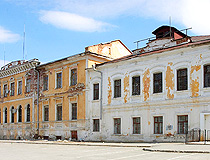
Old buildings in Yekaterinburg
Author: Andrew Golovin

Wooden Church of the Holy Martyr Arkady in Yekaterinburg
Author: Kutenyov Vladimir
Street transport of Yekaterinburg

Tram in Yekaterinburg
Author: Andrey Permyakov

Bus in Yekaterinburg
Author: Per Heitmann
The questions of our visitors
All 5 questions
The comments of our visitors
- Currently 3.06/5
Rating: 3.1 /5 (286 votes cast)
Sponsored Links:
The University Sailing Sustainability Challenge has begun!
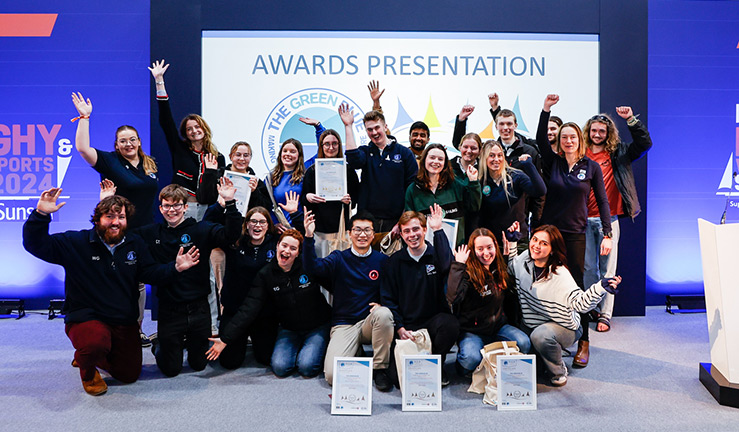
Calling all university student sailors! The Green Blue, the environmental programme of the RYA has officially begun the 2024-25 University Sailing Sustainability Challenge (USSC) , running until February 2025.
Since it started back in 2015, the USSC has encouraged University Sailing Clubs (USCs) across the UK to adopt more sustainable practices, and this year marks an exciting change as there is a new official sponsor, the Royal Thames Yacht Club .
The 2024-25 Challenge, backed by the British Universities Sailing Association (BUSA) , introduces a new judging criterion, offering University Sailing Clubs (USCs) in the UK greater creativity and flexibility in their sustainability efforts. Clubs appoint a Sustainability Officer who commits to The Green Blue Boating Pledge and focuses on four of eight categories, such as reducing waste and combating climate change. Throughout the challenge, clubs complete tasks and submit evidence to the judging panel, earning a USSC certificate of achievement.
An exciting opportunity for clubs and students to really show what they can do; the panel awards all clubs who participate and complete their tasks with an official USSC certificate of achievement. The judging panel also score all submissions with the top four participants being selected to receive a prize at the USSC Awards Ceremony, held during the prestigious RYA Dinghy & Watersports Show in February 2025.
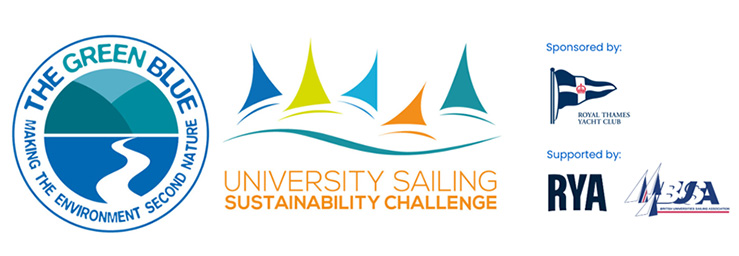
“We, the university community, benefit hugely from being a part of then The Green Blue challenge. Through the challenge we push ourselves, our clubs, and the clubs we sail at, to be more sustainable and to look at the ways in which the sailing community can support the protection of our waterways and our planet” said Amelie Sadler, Vice Chair at BUSA - British Universities Sailing Association.
"The younger generation of sailors are the future of the sport and it's amazing how many of them are passionate about sustainability. By getting involved in the USSC, it's a great way for individuals and university clubs to not only earn recognition but also set an example for the wider boating community. The work they do can make a real difference in protecting the environment, both in the present and for years to come.” said Kate Fortnam, Campaign Manager at The Green Blue.
Last year an impressive 14 universities successfully completed the Challenge, showcasing their dedication to fostering sustainable values within their clubs. This year, with the support of the Royal Thames Yacht Club, The Green Blue anticipate even greater participation and impact.
“At the Royal Thames Yacht Club, we are committed to the adoption of sustainable practices both within the Club and on the water, and as such are delighted to be supporting the excellent University Sailing Sustainability Challenge. Our young people are the future, and it is critical that future is sustainable. May we thank all participants in this most worthy of causes.” said Richard Powell, Vice Commodore at the Royal Thames Yacht Club.
If your club would like to be part of the challenge, visit The Green Blue’s website to find out more, sign up or contact us at [email protected].
Alternatively, you can follow the journey of the Challenge on social media:
- Facebook: @TheGreenBlue
- Instagram: @the_green_blue
- X (formerly Twitter): @TheGreenBlue
- LinkedIn: @The Green Blue
Read further information about the Royal Thames Yacht Club.

IMAGES
VIDEO
COMMENTS
The gold standard. The RYA Yachtmaster® Certificate of Competence is often the ultimate aim of aspiring skippers. It is a well known, highly respected qualification worldwide, proving your experience and competence as a skipper. Unlike other qualifications in the cruising programme, there is no formal training course to become an RYA Yachtmaster.
View your RYA certificates online by registering for a free MyRYA account. The RYA's training courses and qualifications are recognised and respected all over the world. With more than 2,400 recognised training centres across 58 different countries and more than 100 courses, there's something for every age, interest and ability.
Prove your ability and experience as a skipper with an RYA Certificate of Competence. Available at Advanced Powerboat and RYA Yachtmaster® Coastal, Offshore and Ocean level, RYA Certificates of Competence are well known qualifications that are highly respected worldwide. Unlike other RYA qualifications, Certificates of Competence are not ...
Yachtmaster Offshore is competent to skipper a cruising yacht on any passage during where astronavigation is not necessary. An RYA/MCA Yachtmaster Offshore Certificate of Competence is often the ultimate aim of aspiring skippers. It is a well known, highly respected qualification worldwide, proving your experience and competence as a skipper.
Yachtmaster Certificate of Competency. The Yachtmaster Qualification is the pinnacle of the RYA (Royal Yachting Association) Training and Certification System. It is widely recognized throughout the world as a prestigious accomplishment. ... (#300) is taught on a Motor Yacht and the practical training and examination are towards a Motor ...
The Ocean Academy is fully accredited to offer the RYA Power Boat Level 2 Course (PBL2). We offer this course in a two-day theory and Practical course, or a three day evening class for those crew members who are working on-board during the day. The course is offered on our modern and well equipped 23' (7m) center-console training vessel, with ...
The certificate is available via completion of the RYA Day Skipper course OR a one day exam. Pre-Requisites. Pre Exam requirements: Basic boat handling skills under power and sail. Is physically and mentally fit to operate a pleasure craft, and in particular, has sufficient powers of vision and hearing.
RYA stands for Royal Yachting Association which is a United Kingdom national governing body for all forms of boating including yacht cruising and racing. The RYA exists to get more people into watersport activities, promote safe boating practices and raise the standards of yachting and sailing. ... A 5-day course living on board a sailing yacht ...
These are taught to Royal Yacht Association syllabus and standards by experienced RYA Cruising Instructors and Yachtmaster instructors. If you successfully complete a RYA course you will gain a certificate that is recognised all over the world. Sailing Courses that are UK based rather than the Mediterranean or Caribbean will give you a solid ...
Established in 1885, the Royal Yachting Association (RYA) is the UK national body for all forms of boating, including dinghy and yacht racing, motor and sail cruising, RIBs and sports boats, powerboat racing, windsurfing, inland cruising and narrowboats, and personal watercraft. RYA training is forward thinking and designed for whatever level ...
RYA Yachtmaster Offshore exam pre-requisites: Minimum seatime: Documented minimum sea time 1 completed on a seagoing sailing or motor yacht (as appropriate) in the last 10 years:. 50 days at sea on yachts up to 500gt 2 which may be reduced to 25 days if the candidate already holds an RYA Yachtmaster Offshore Certificate of Competence 3;; 5 days as skipper on vessels less than 24m LOA, which ...
Gain International Yacht Training certificates and ICC qualifications for chartering and recreational yacht sailing. Learn to crew or skipper a yacht Manly Sailing works with an accredited Royal Yachting Association teaching centre, for adult yacht training. The talented instructors can take you from complete beginner to qualified skipper in a ...
The Royal Yachting Assocition has a full range of training, from recreational sailing, introductory dinghy programs to sport sailing.Even so, the most common nautical courses in the RYA for cruising sailing are: Competent crew. Day Skipper. Coastal Skipper. Yachtmaster. On the other hand, the RYA also issues certificates that prove the experience and competence of sailors and that are ...
Example of an RYA ICC Certificate. The International Certificate of Competence (ICC) is intended to prove evidence of competence. It can be requested by officials in the country where one is visiting. The ICC provides assurance that the certificate holder is competent to operate a pleasure craft safely, despite the fact that one is not a ...
Individuals applying for a commercial endorsement from the Royal Yacht Association (RYA) to work on code vessels. This certificate sets out minimum requirements for working conditions, including medical fitness, for seafarers. The ML5 certificate is a medical report completed by a certified doctor.
The challenge welcomes the Royal Thames Yacht Club as its new sponsor, bringing fresh energy and support to the challenge. In addition to this new partnership, the 2024-25 Challenge introduces a revamped judging criterion, allowing clubs to be even more creative and flexible in their approach to sustainability.
The Royal Yachting Association is the national governing body for dinghy, motor and sail cruising, all forms of sail racing, RIBs and sportsboats, windsurfing and personal watercraft, and is a leading representative body for inland waterways cruising in the UK. ... The International Certificate for Operators of Pleasure Craft is intended to ...
Yekaterinburg [a] is a city and the administrative centre of Sverdlovsk Oblast and the Ural Federal District, Russia.The city is located on the Iset River between the Volga-Ural region and Siberia, with a population of roughly 1.5 million residents, [14] up to 2.2 million residents in the urban agglomeration. Yekaterinburg is the fourth-largest city in Russia, the largest city in the Ural ...
News, notes and thoughts: 4 April, 2011 / Free travel on new high-speed trains should allay fans' fears about long journey to Ekaterinburg - the most far-flung city on Russia's list of sites for 2018 World Cup. Let's hope the train will not break down in the middle of nowhere. 1 February, 2011 / Today is the 80th anniversary of the birth of Boris Yeltsin, the first president of Russia.
5. Chertovo Gorodische. 112. Points of Interest & Landmarks. By saronic. The about 100m long and 20m high rock wall is impressive. It is a phenomenon, which can be found also in other places... 6. Vaynera Street, Yekaterinburg.
The ICC is intended to provide evidence of competence when requested by officials in a country you are visiting (i.e. a country you are not a citizen or a resident of). It's an assurance from one government to another that the certificate holder is sufficiently competent to be operating a pleasure craft, despite not holding the visited ...
Yekaterinburg (formerly named Sverdlovsk) is a big city in the Ural mountains in the Asian part of Russia. It is the administrative center of Sverdlovsk Oblast. It has a population of 1,483,119 people. The city was started in 1723 by Vasily Tatischev and named after empress Catherine I who was the Peter the Great 's wife.
Validity of RYA certificates abroad. When a UK ICC issued by the RYA or any other RYA certificate is acceptable is determined by: The legislation of the flag state (country of registration) of the boat ... The intention is that the sail category alone demonstrates competence for a sailing yacht with an auxiliary engine. The RYA's view is that ...
Throughout the challenge, clubs complete tasks and submit evidence to the judging panel, earning a USSC certificate of achievement. ... "At the Royal Thames Yacht Club, we are committed to the adoption of sustainable practices both within the Club and on the water, and as such are delighted to be supporting the excellent University Sailing ...